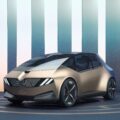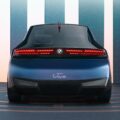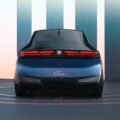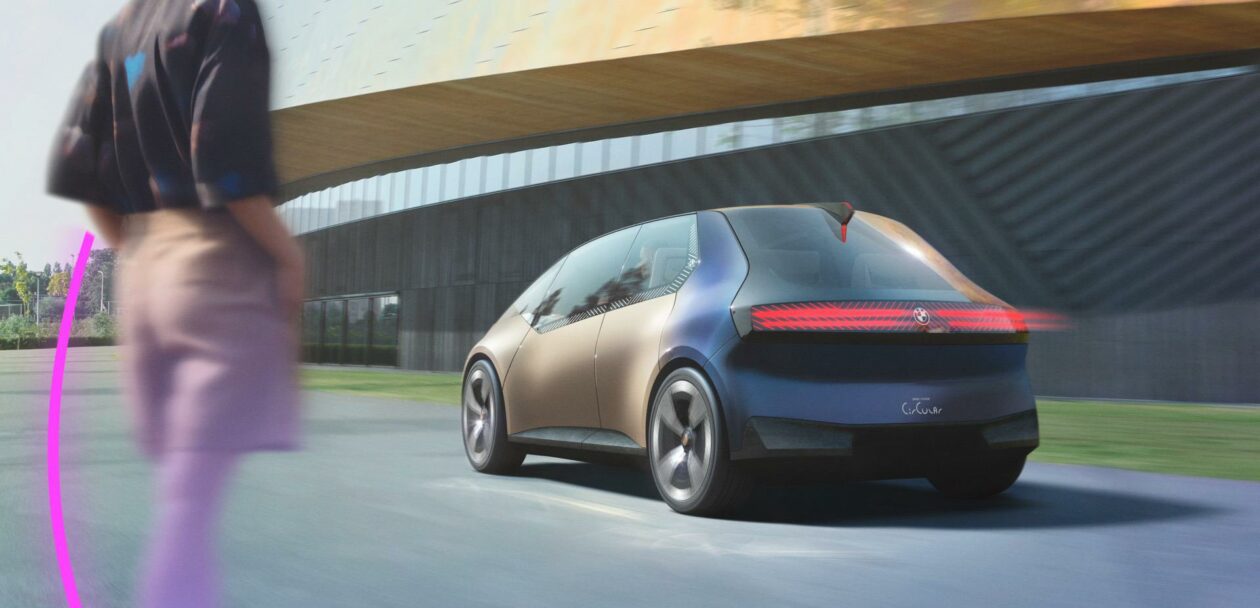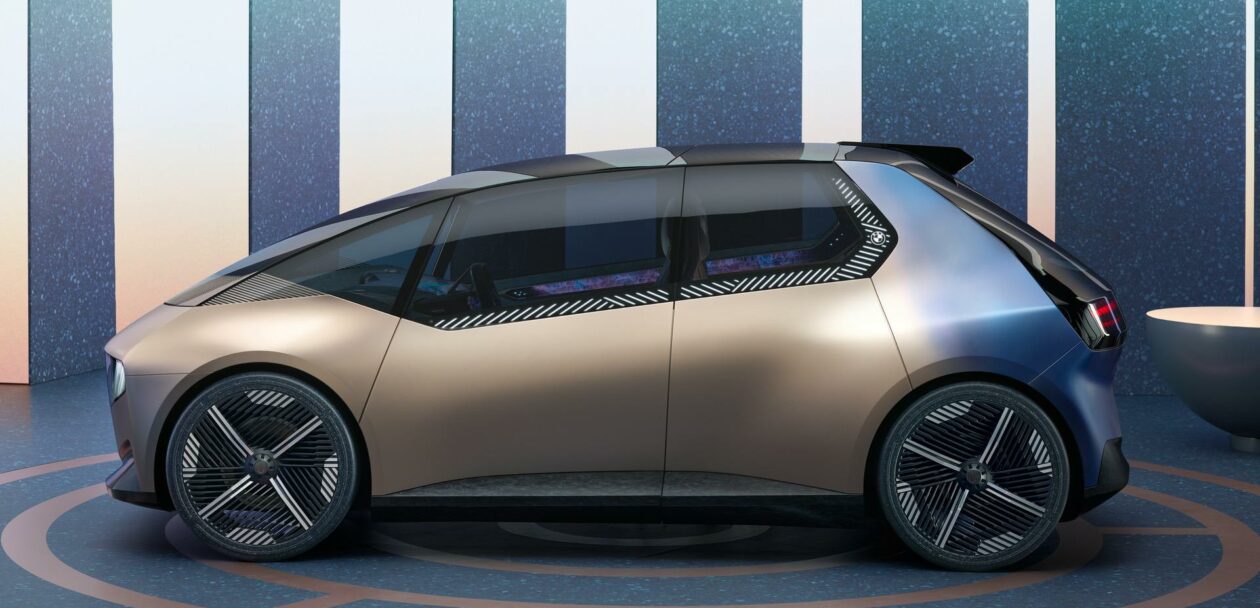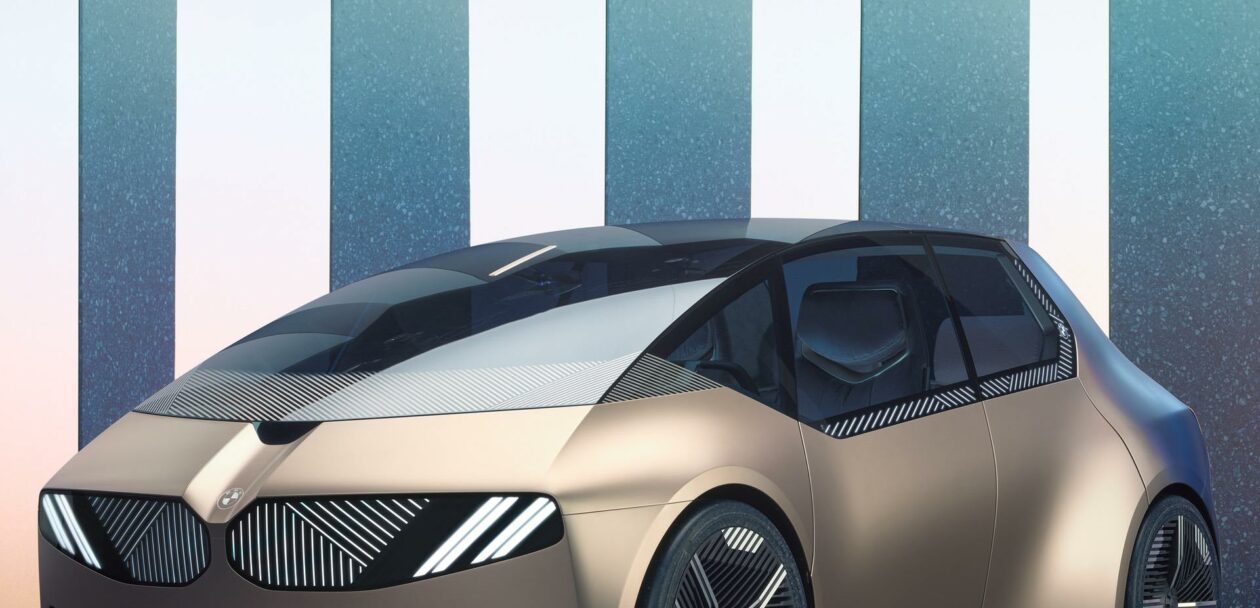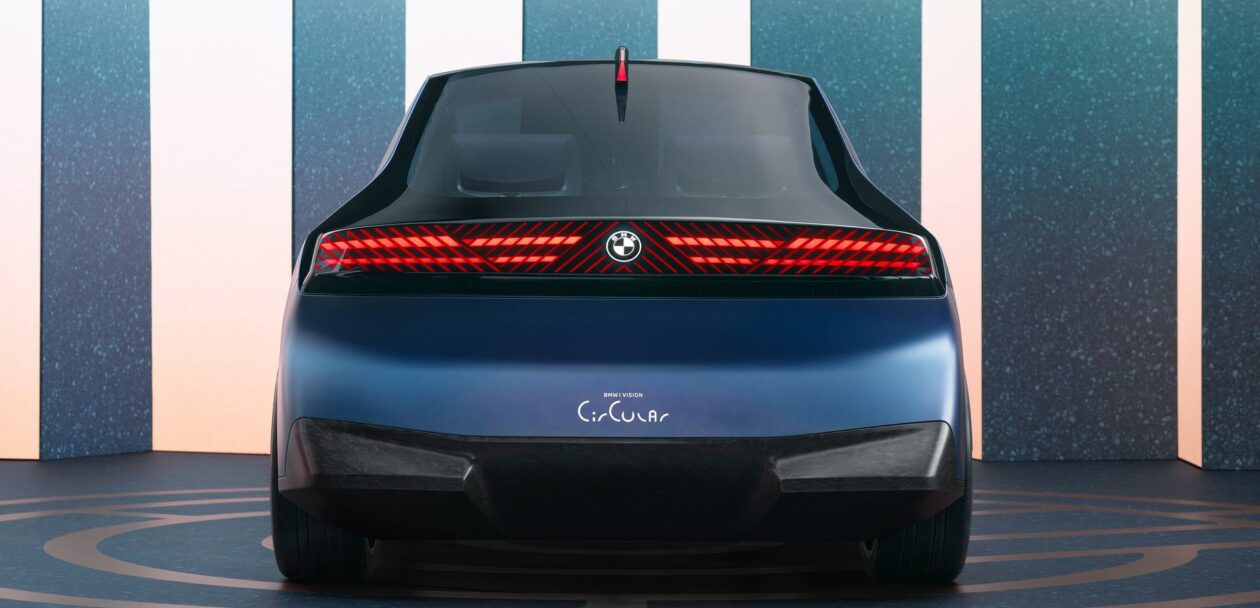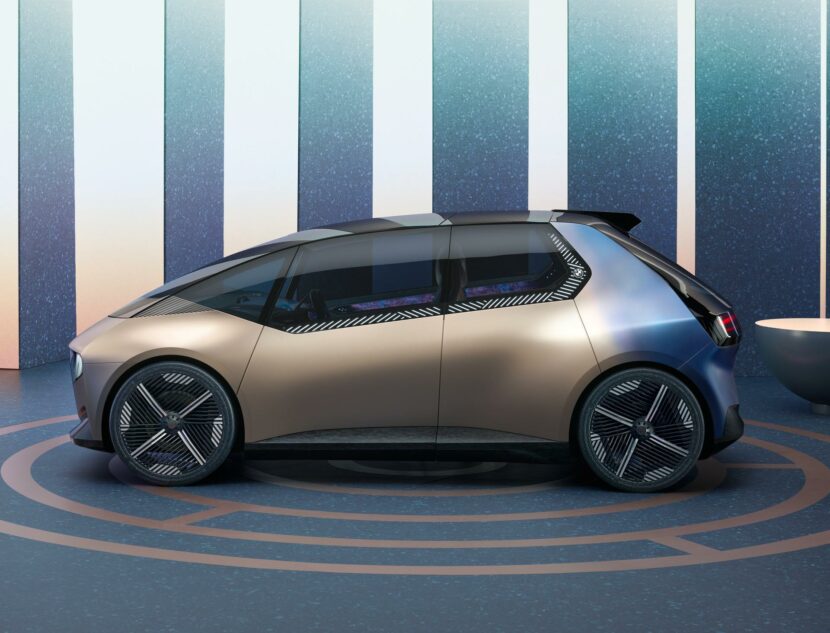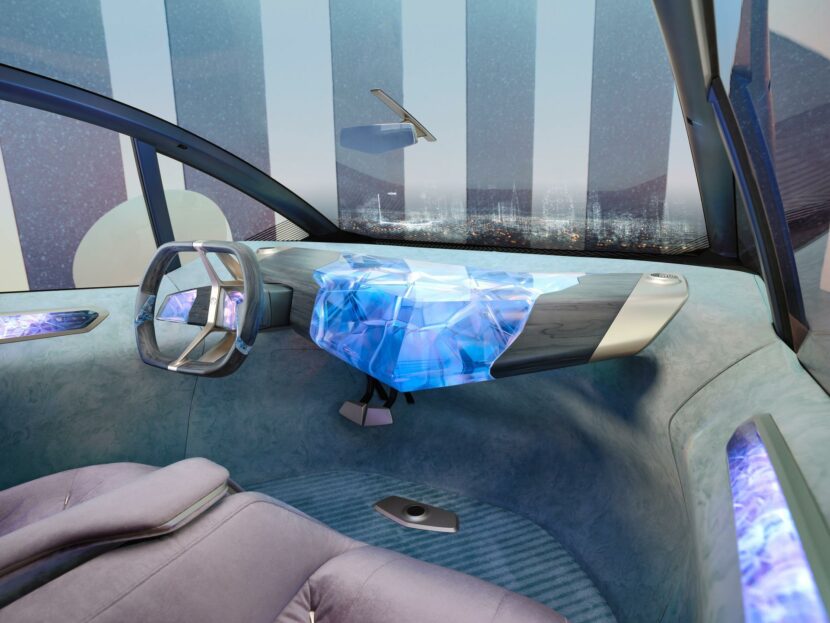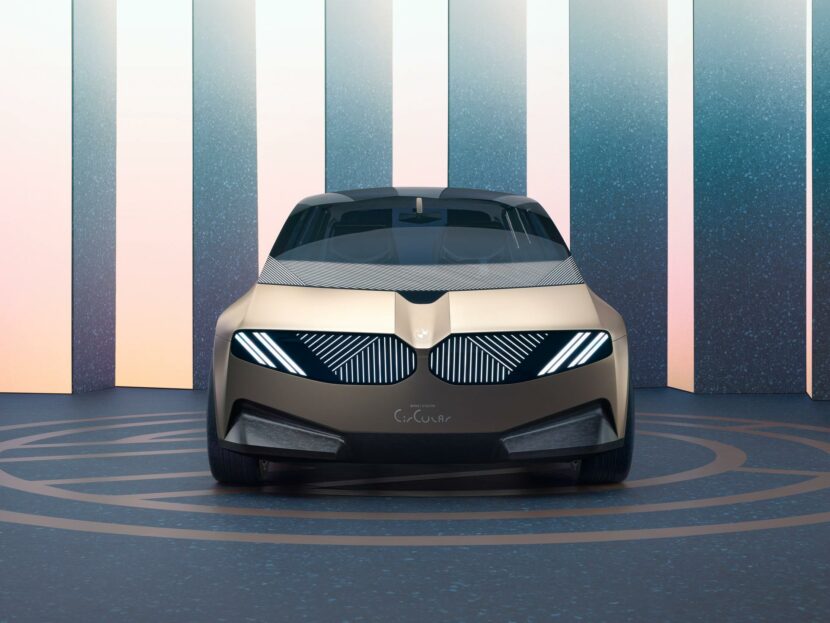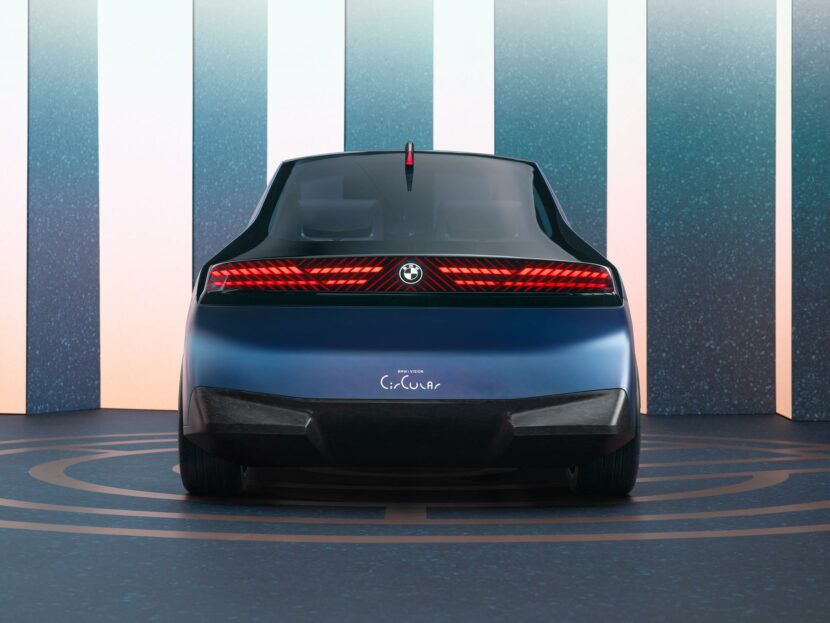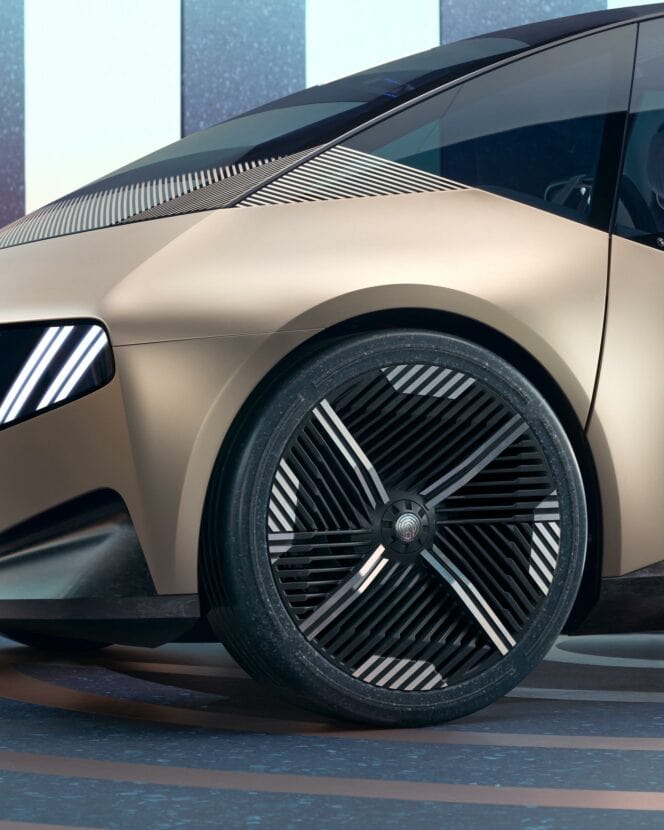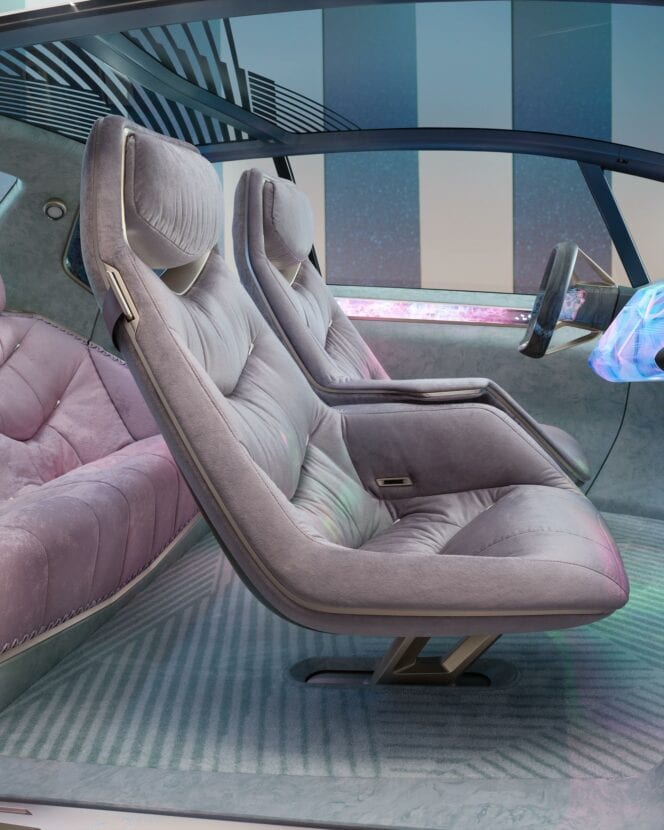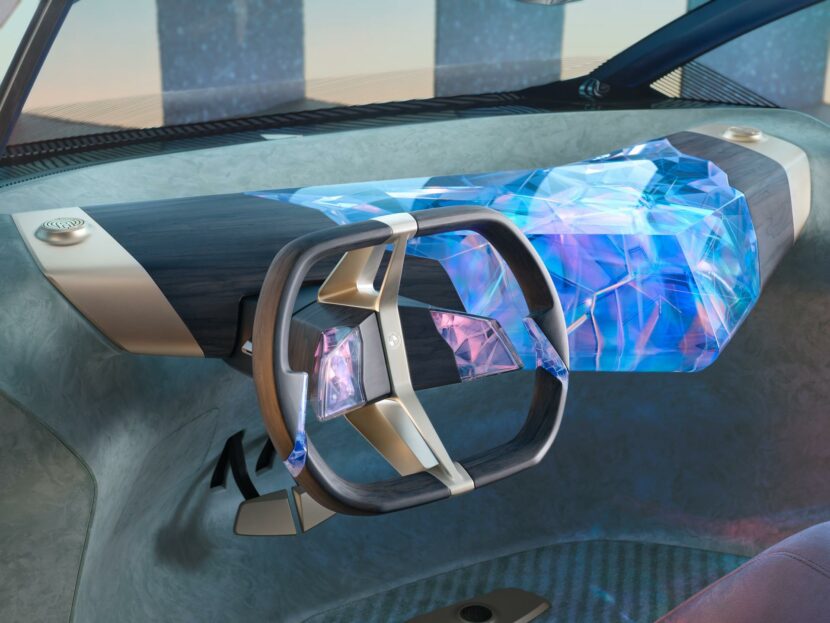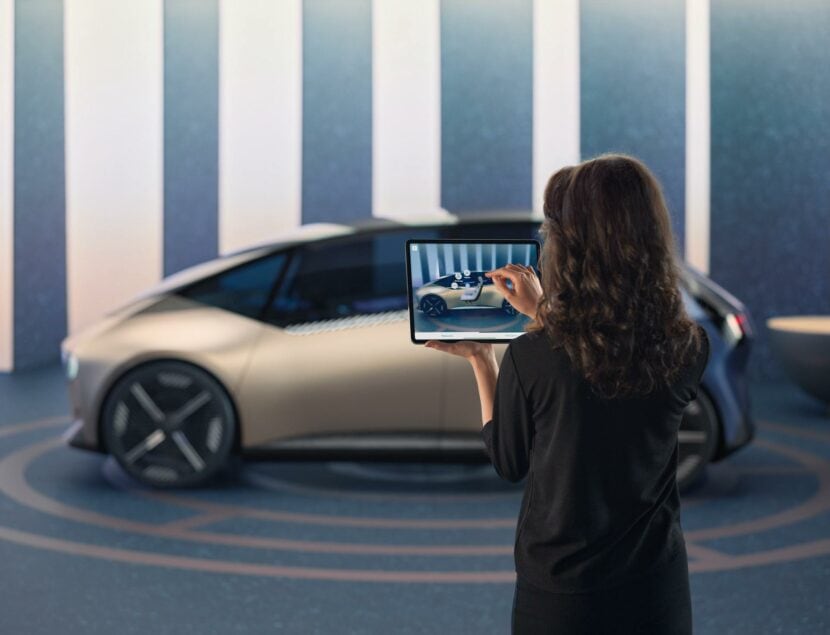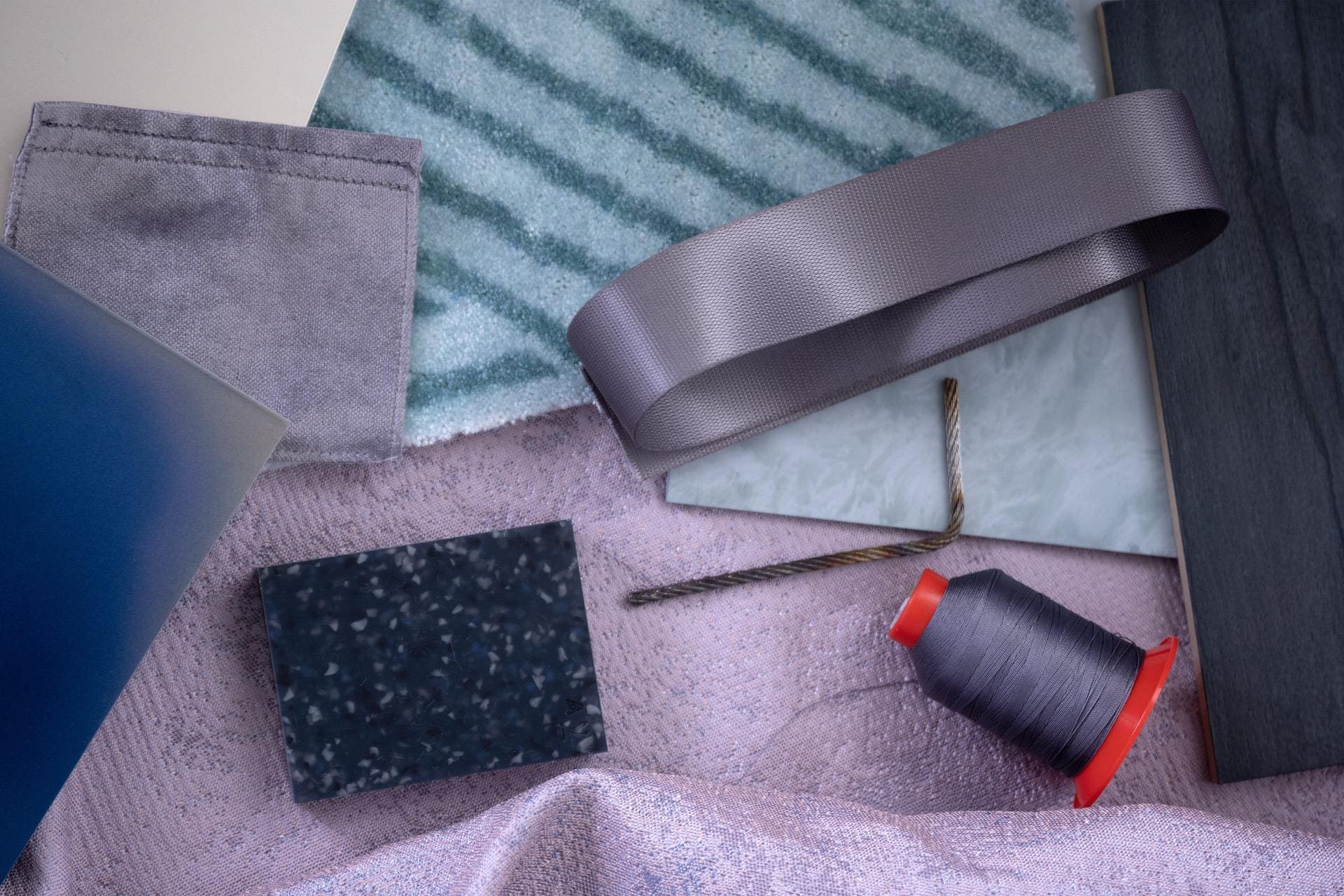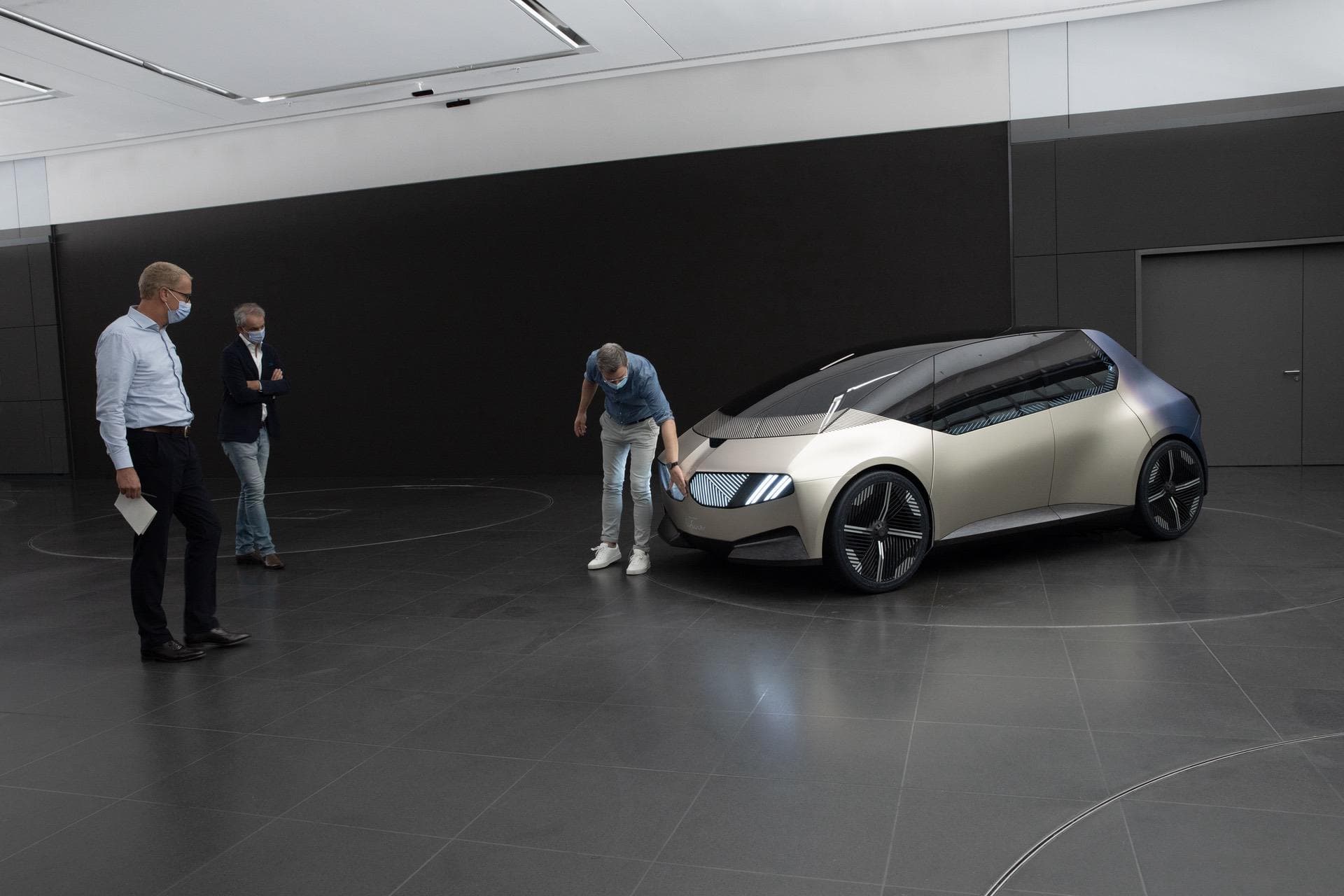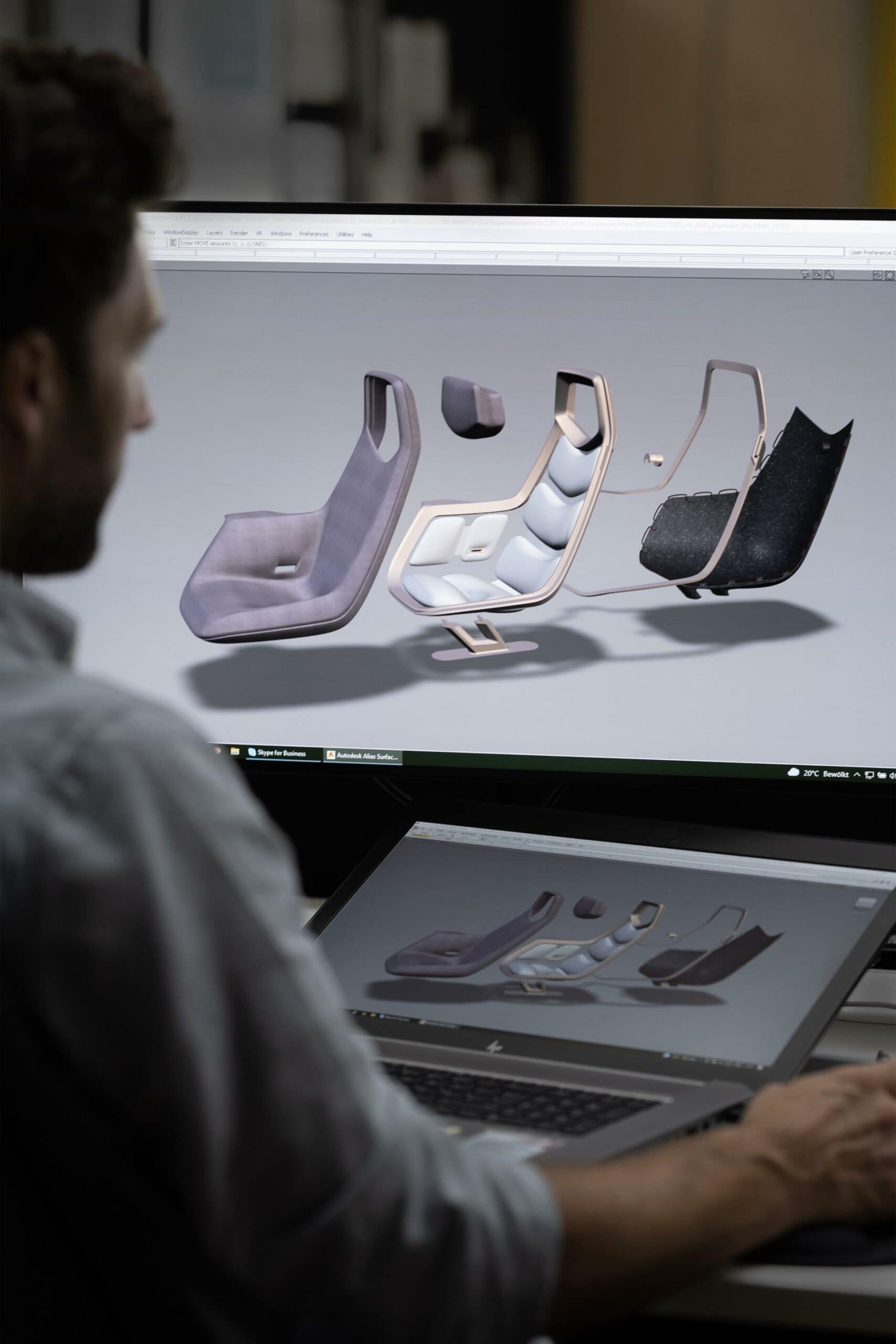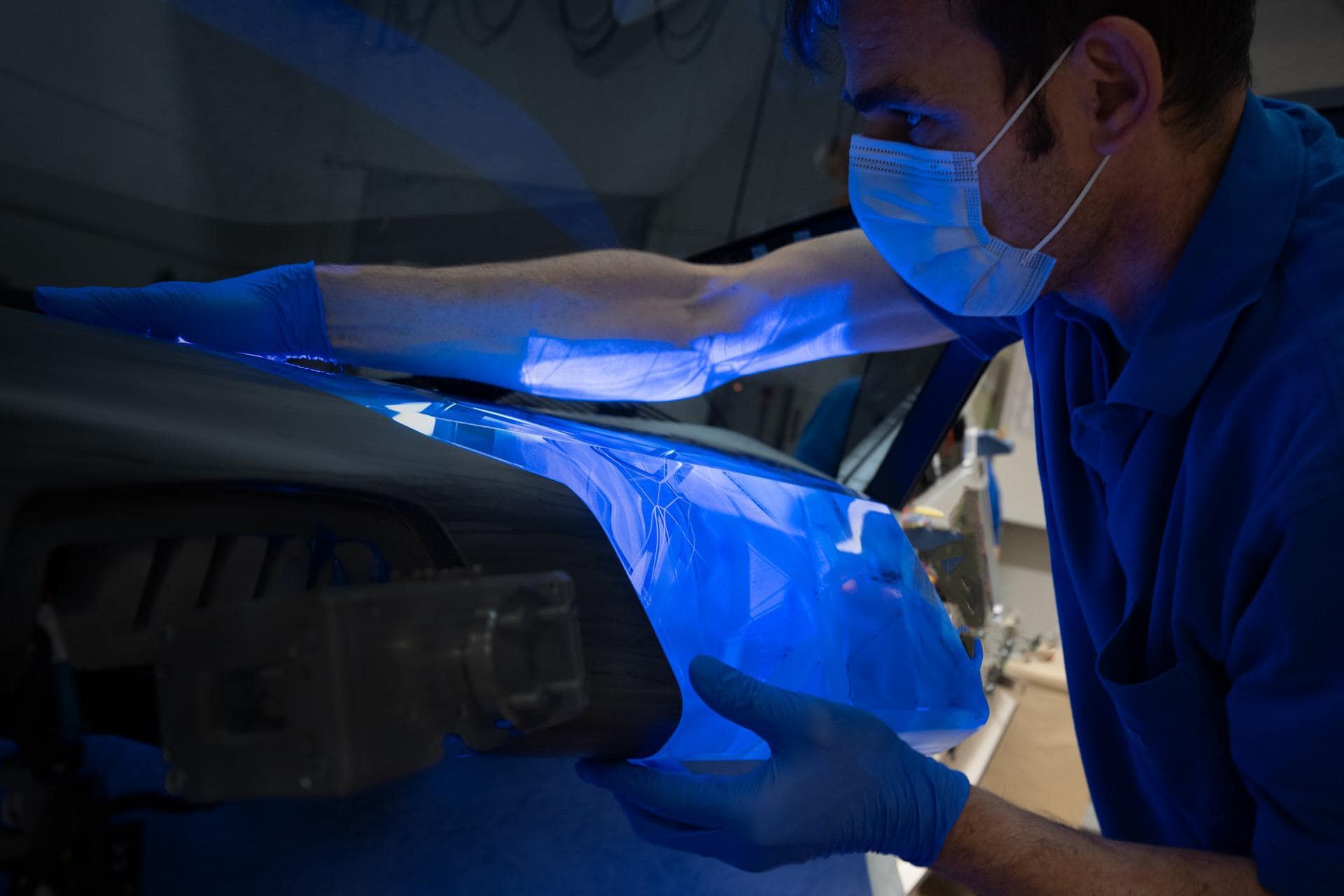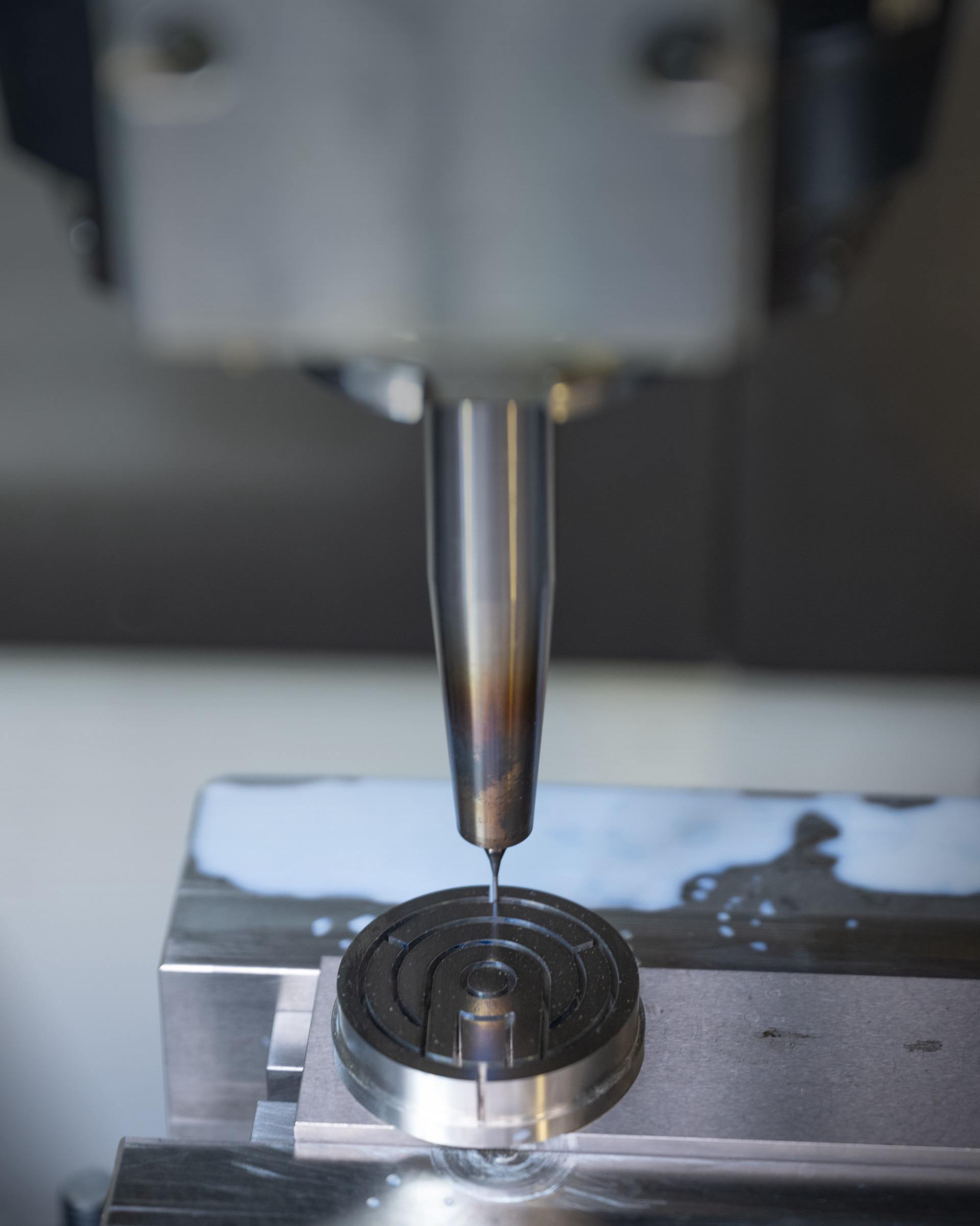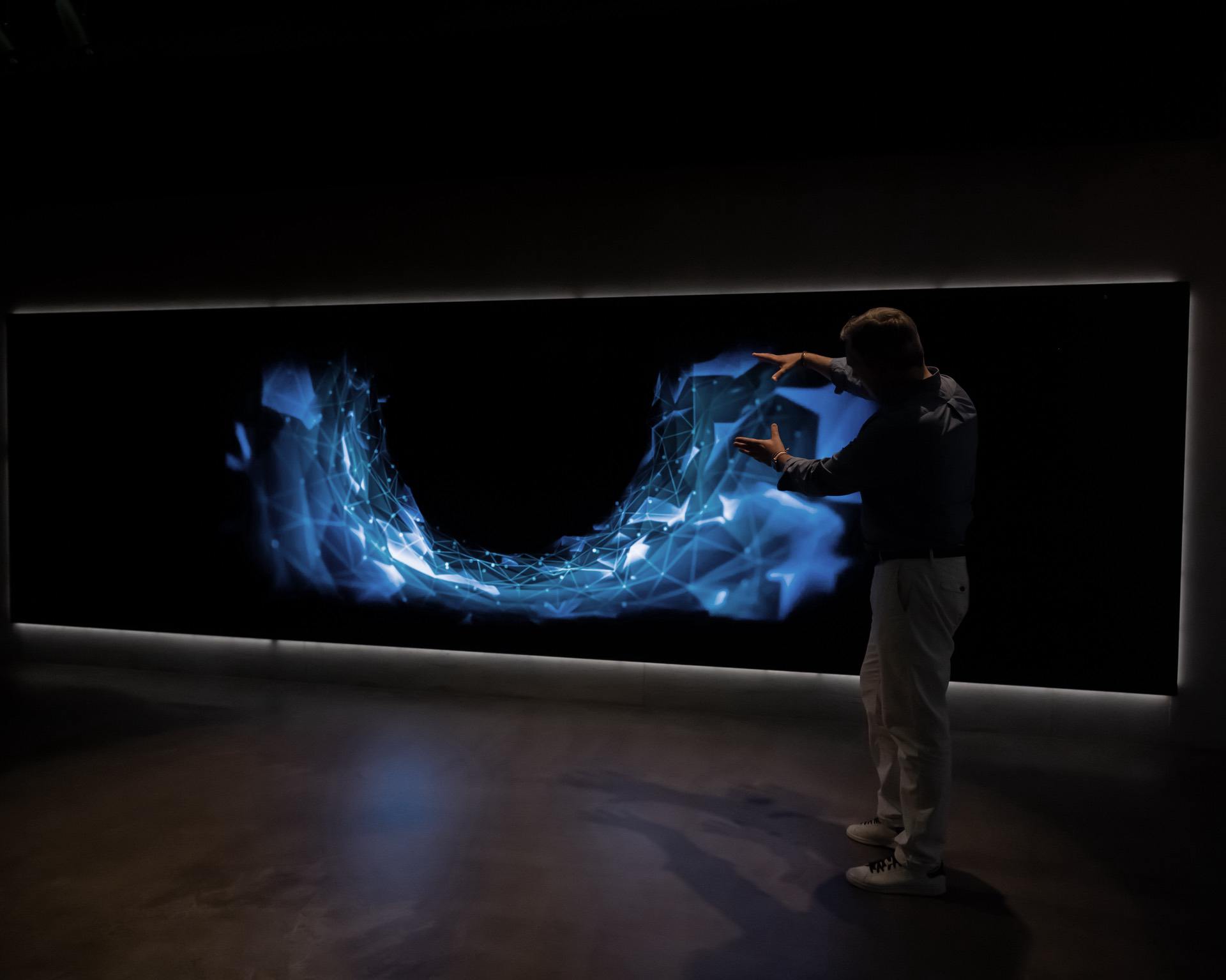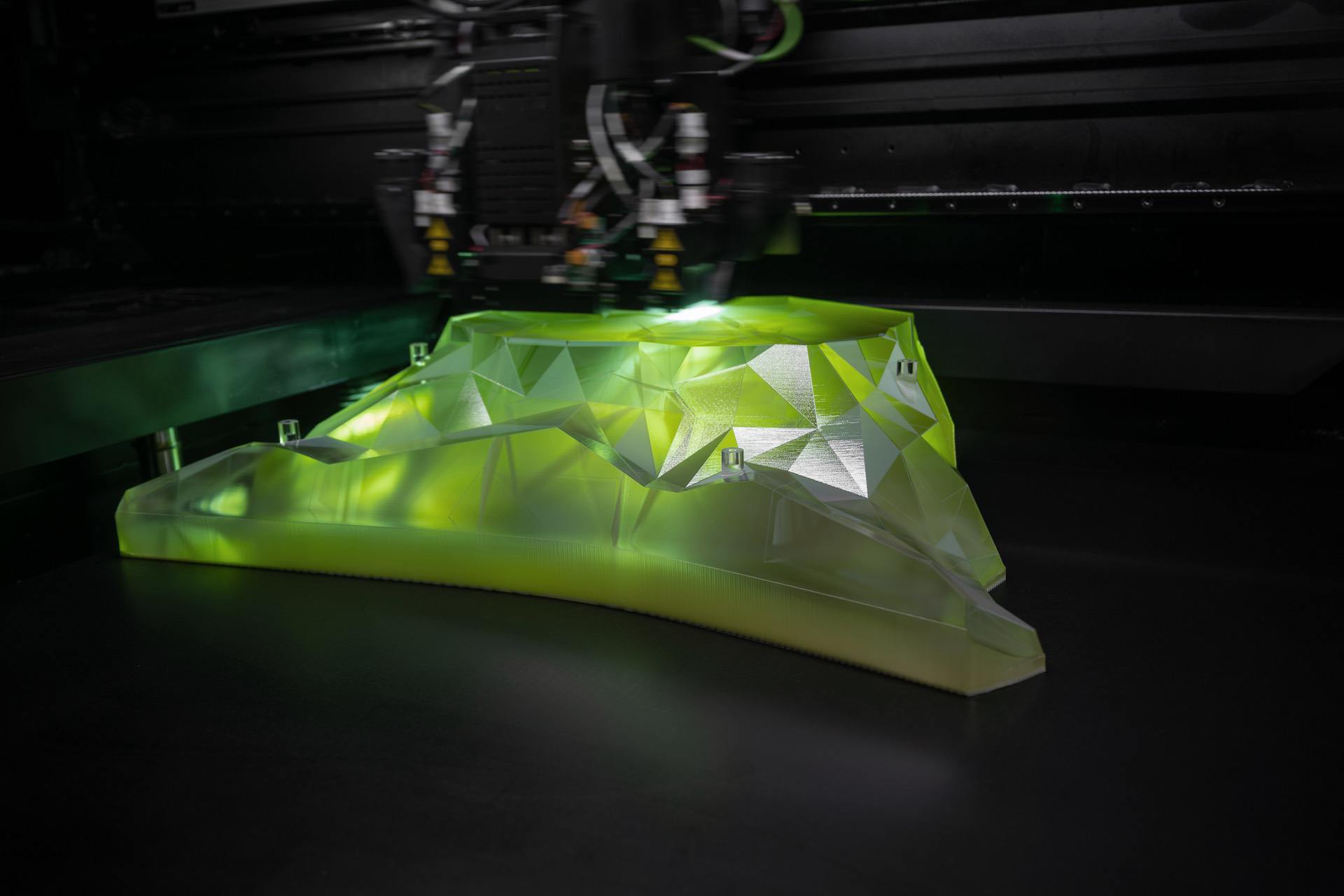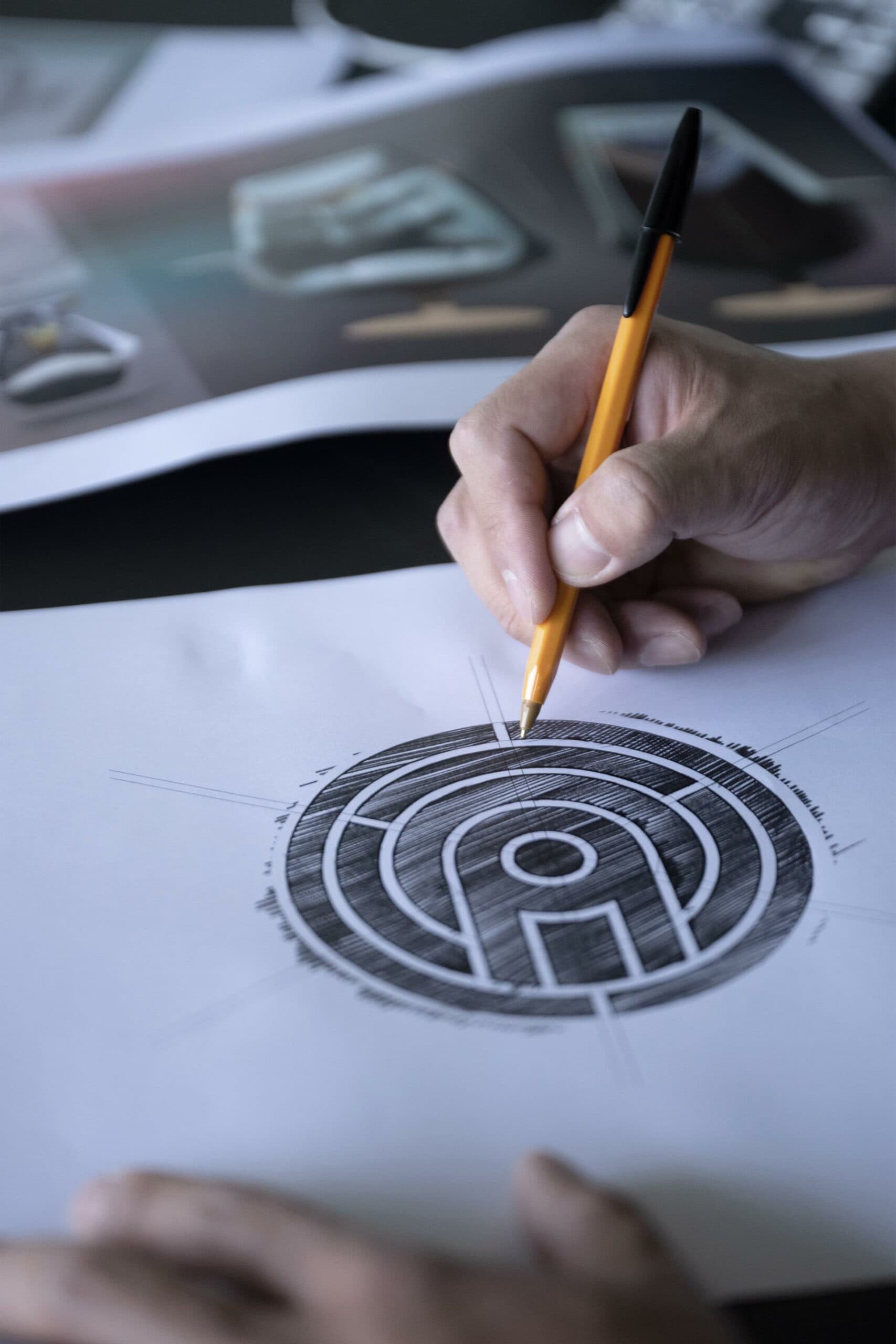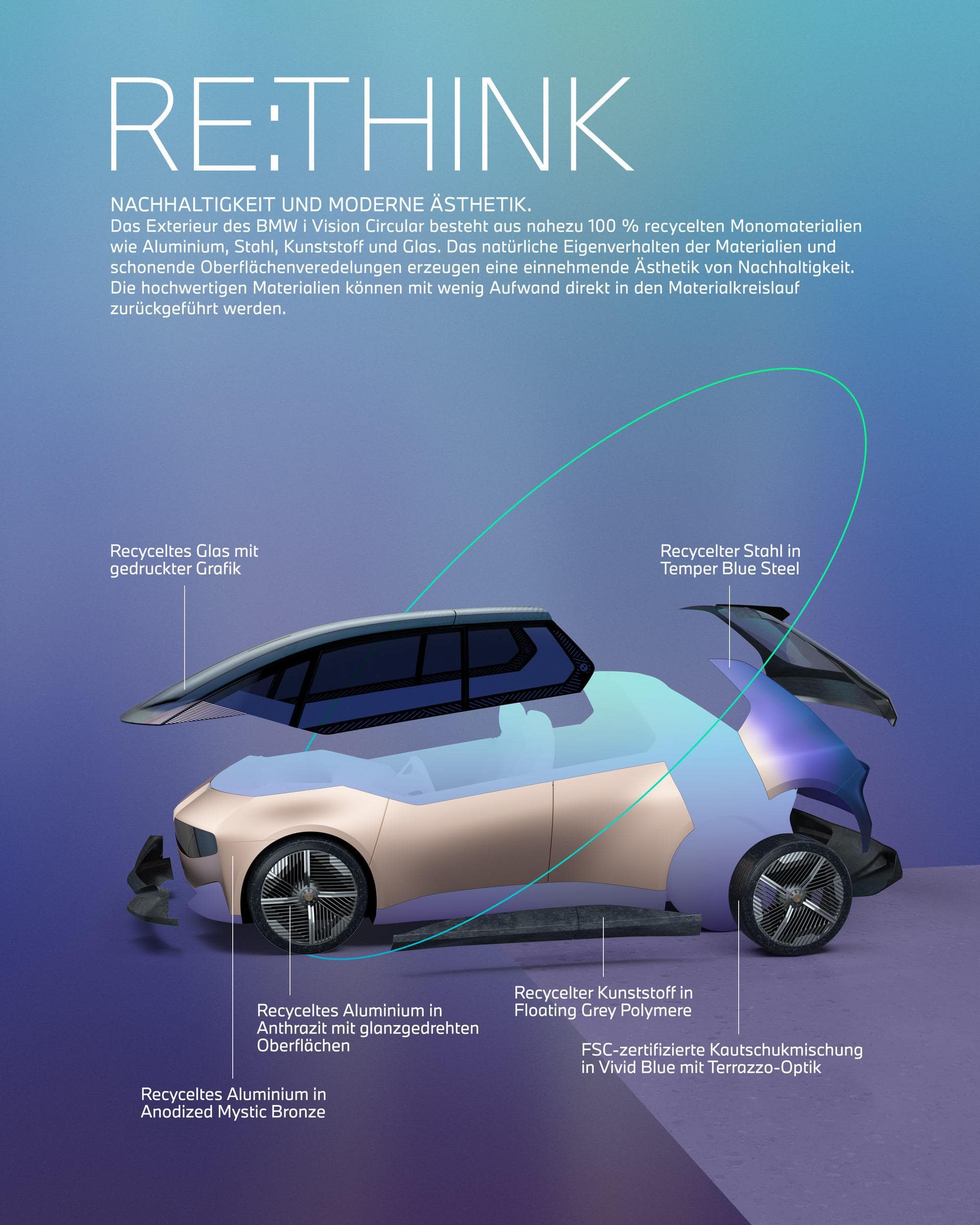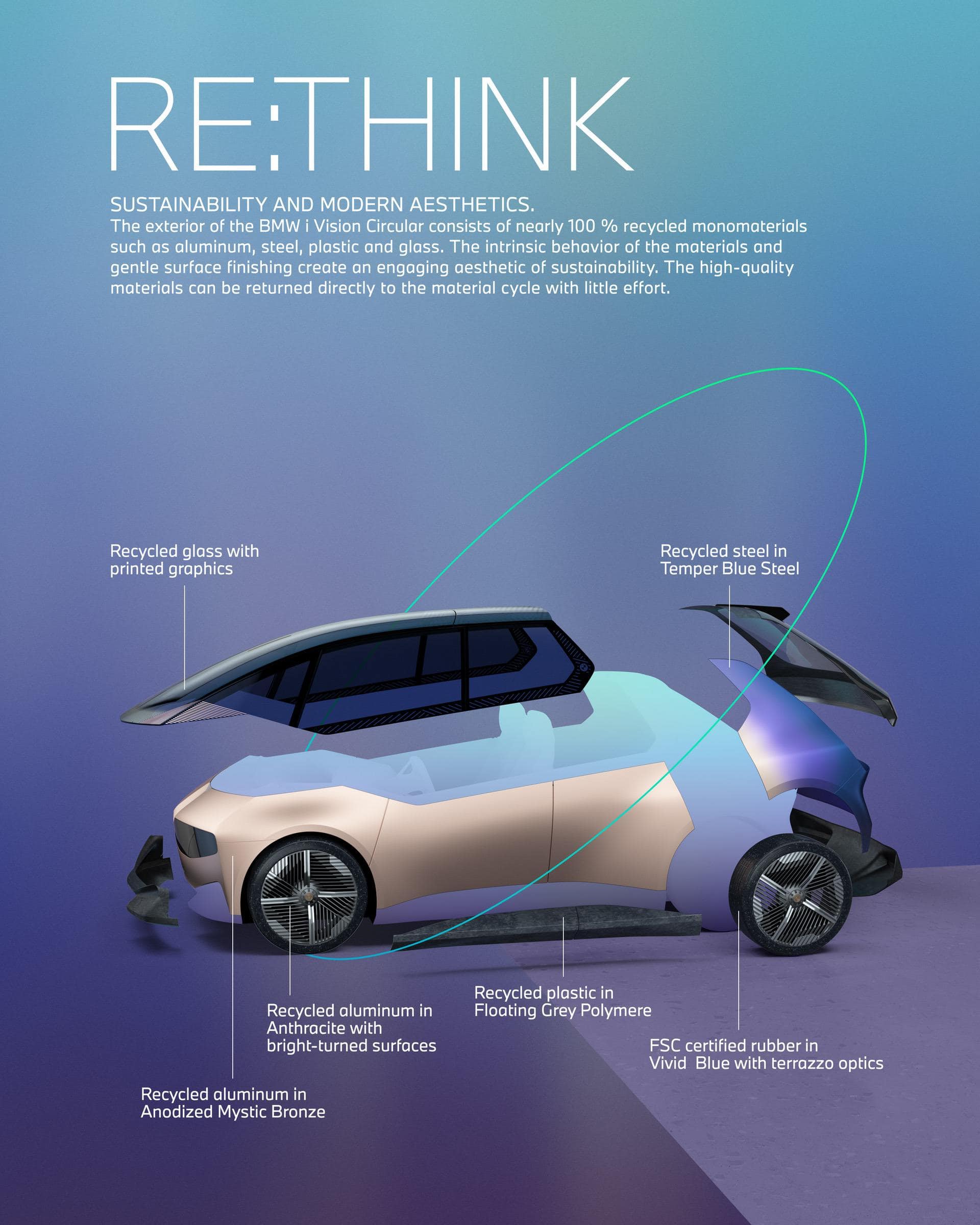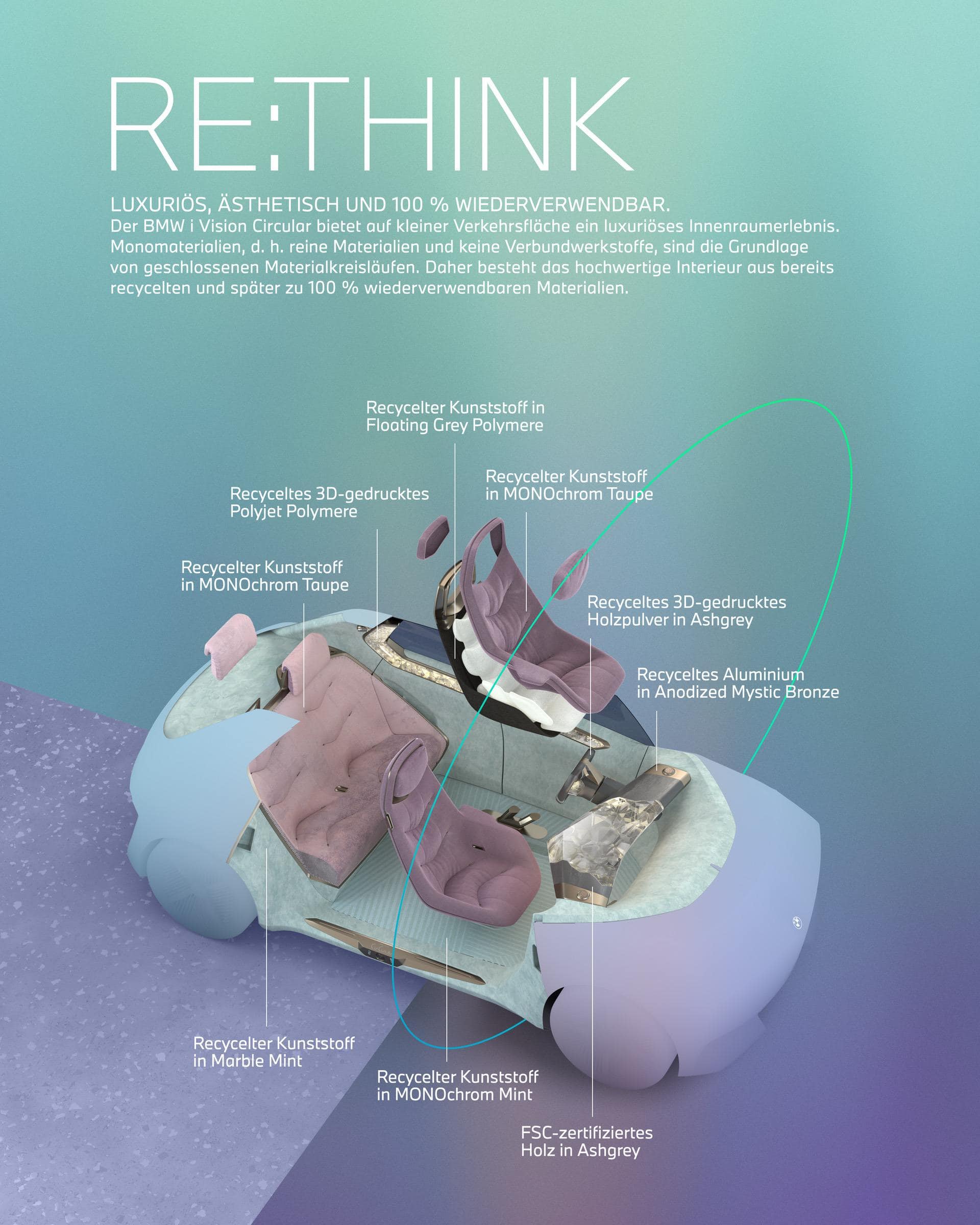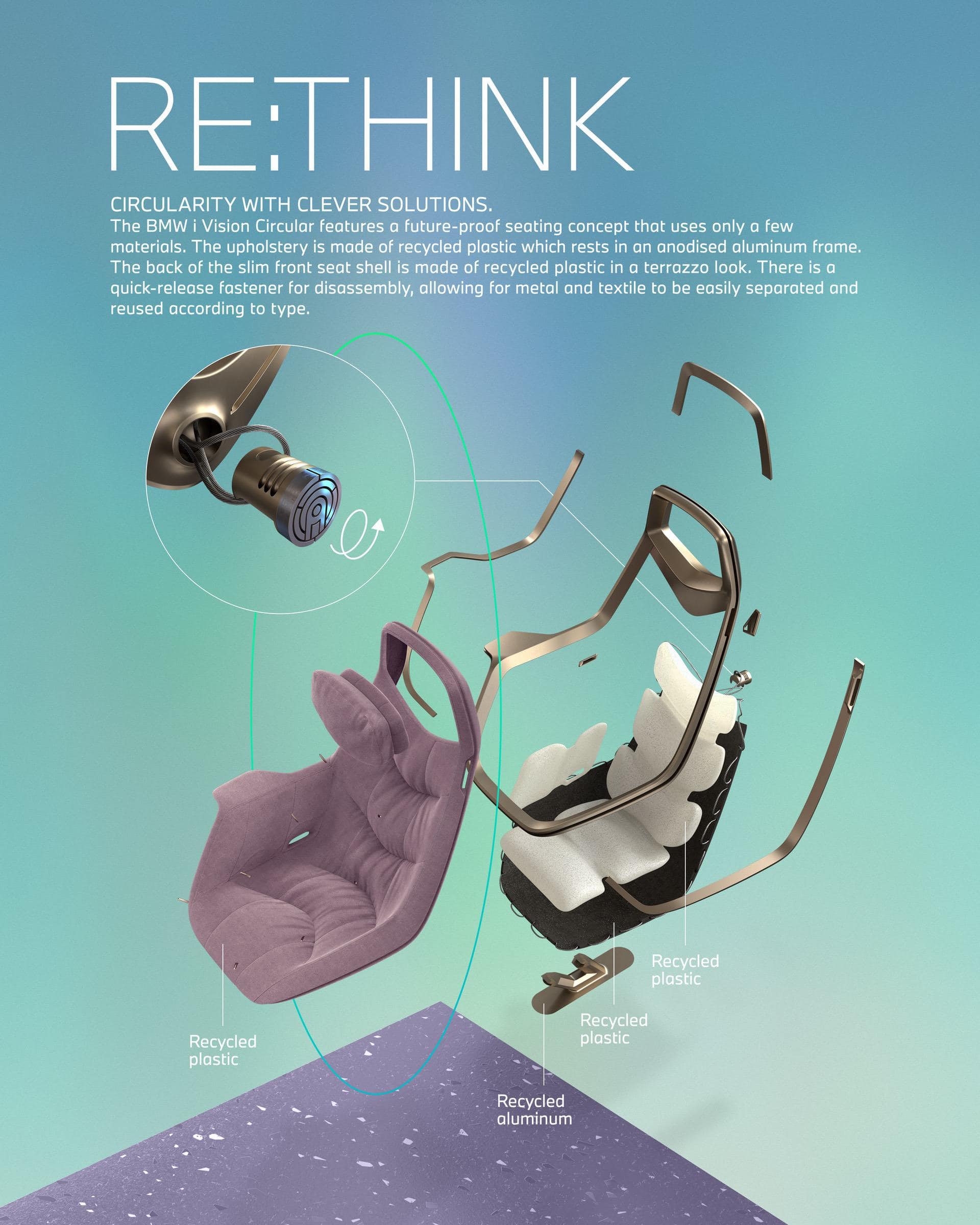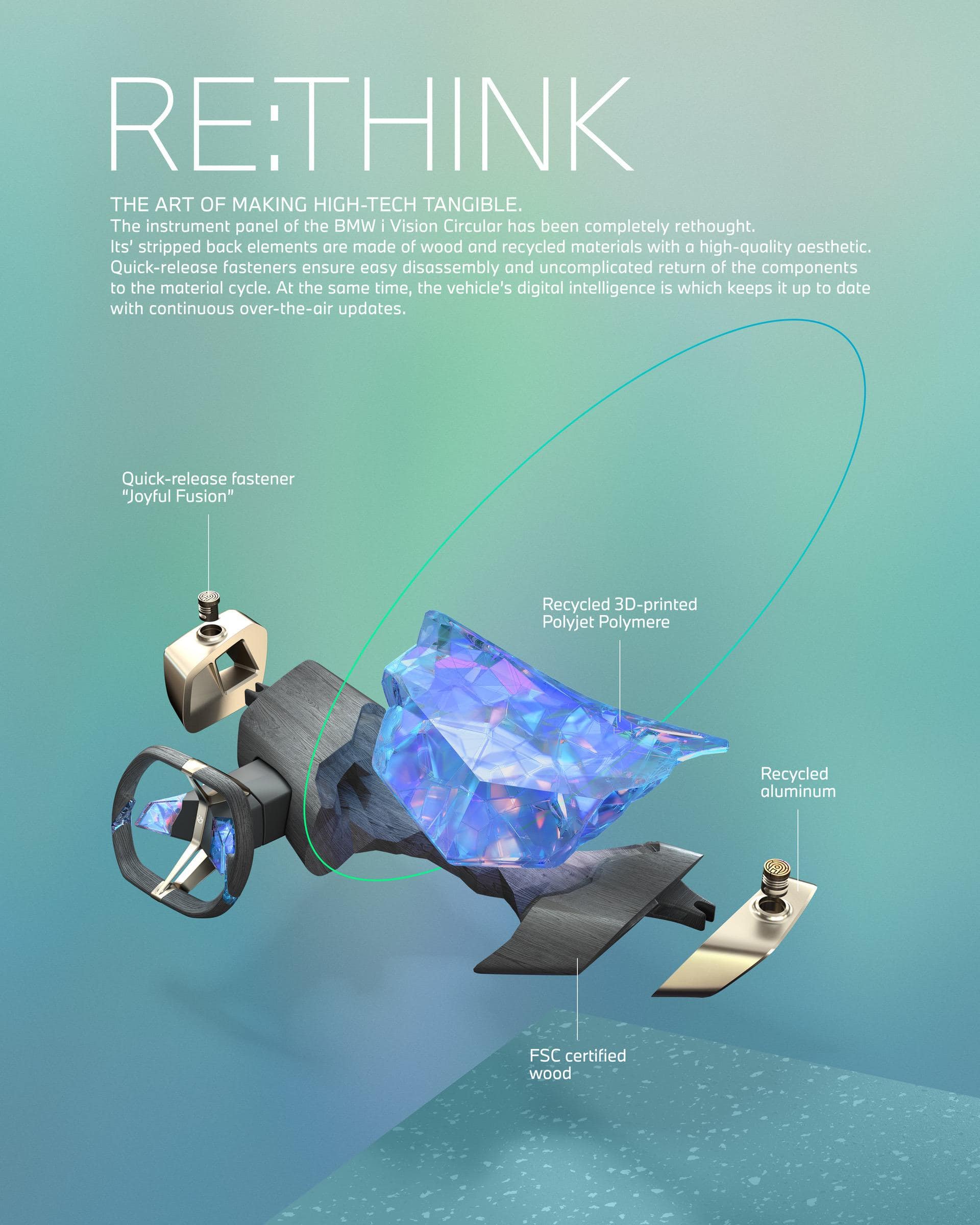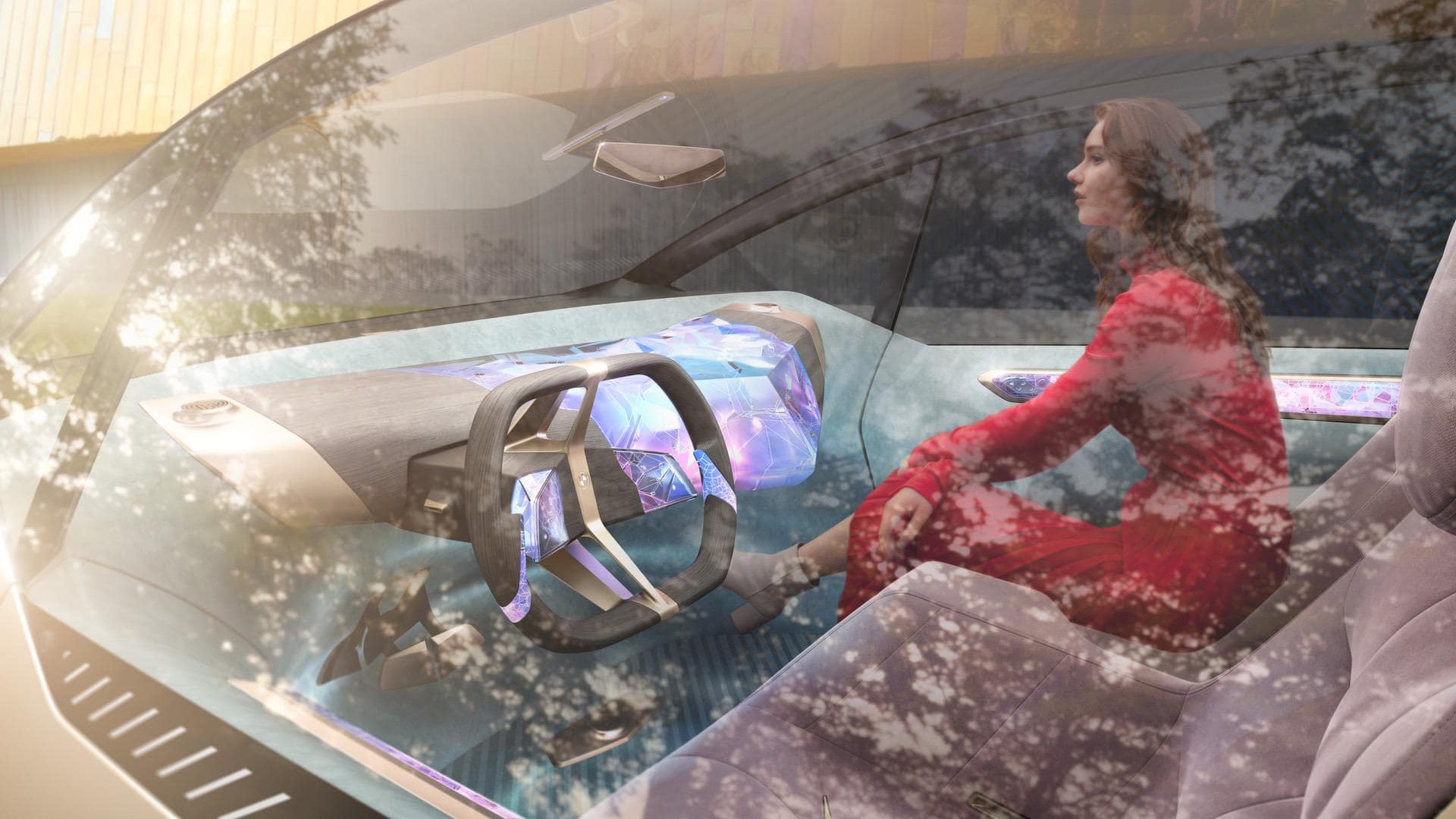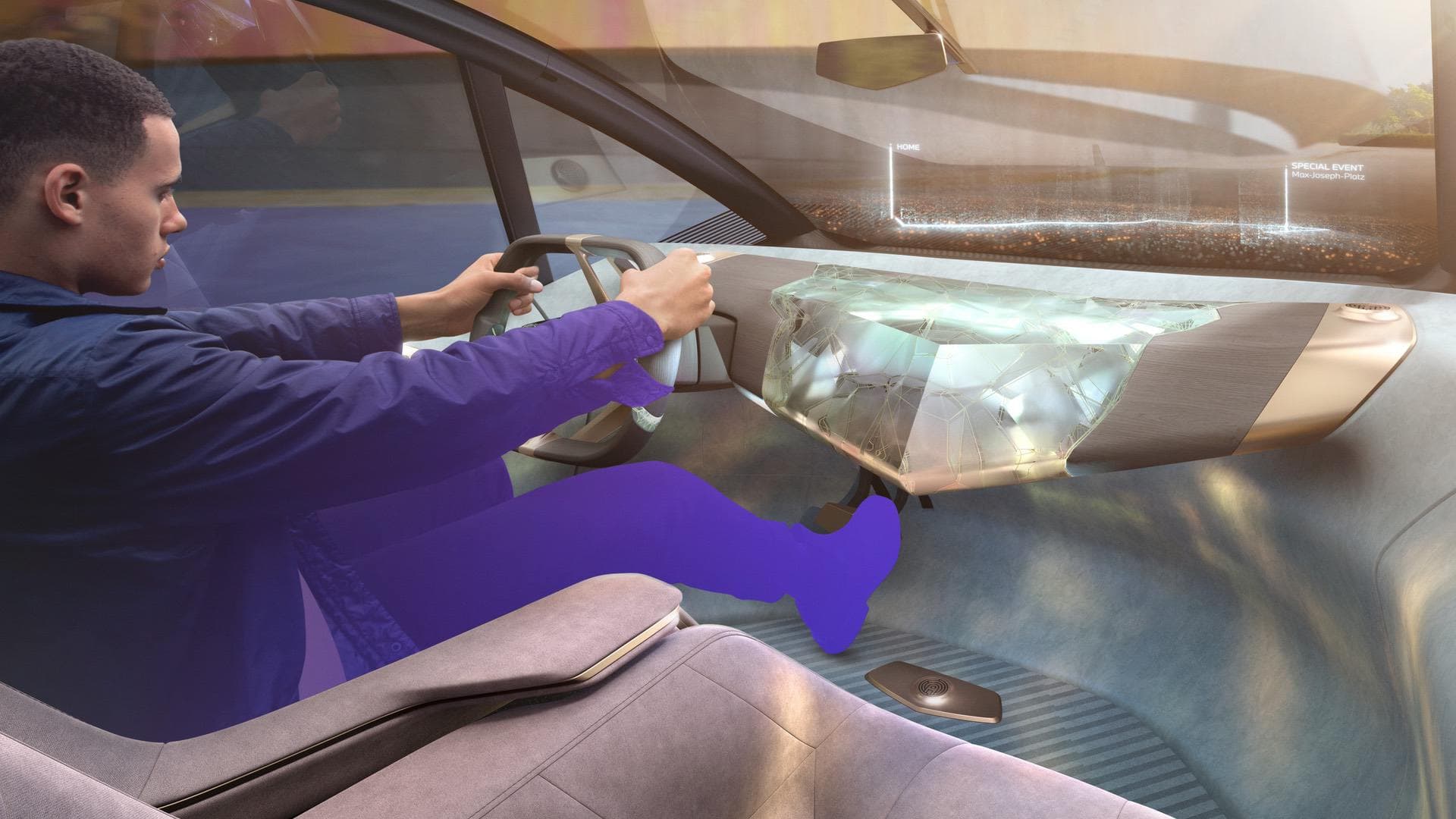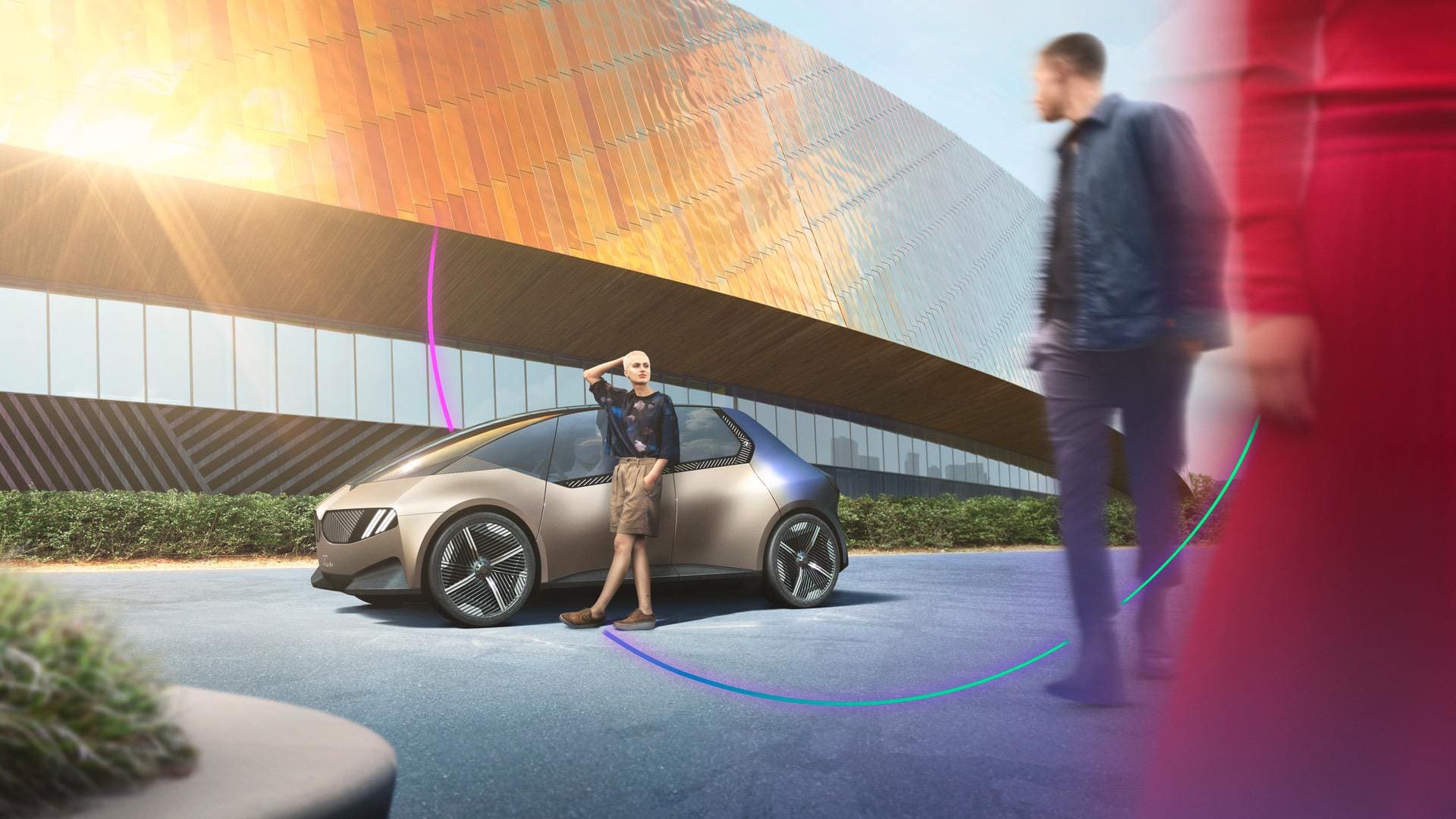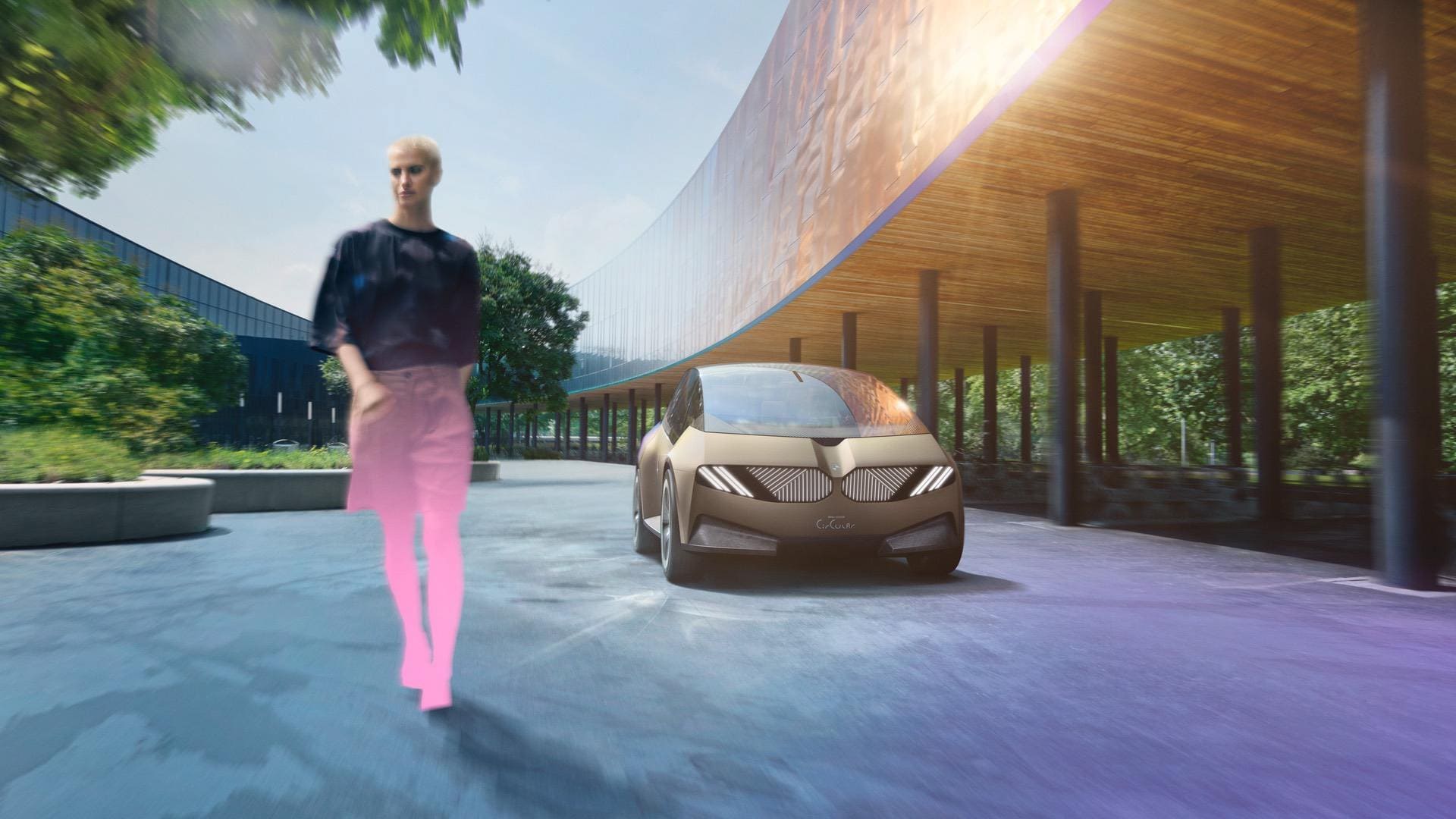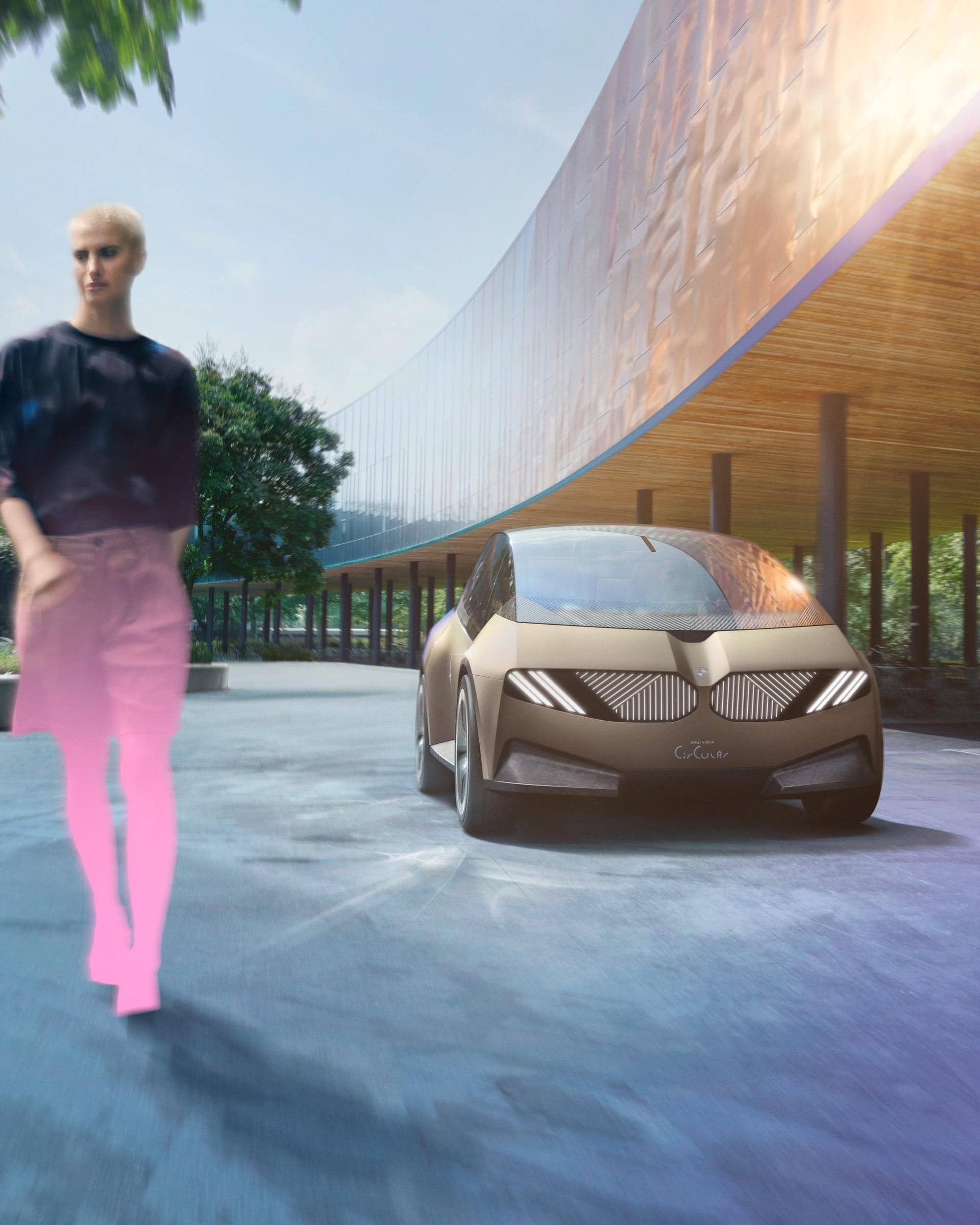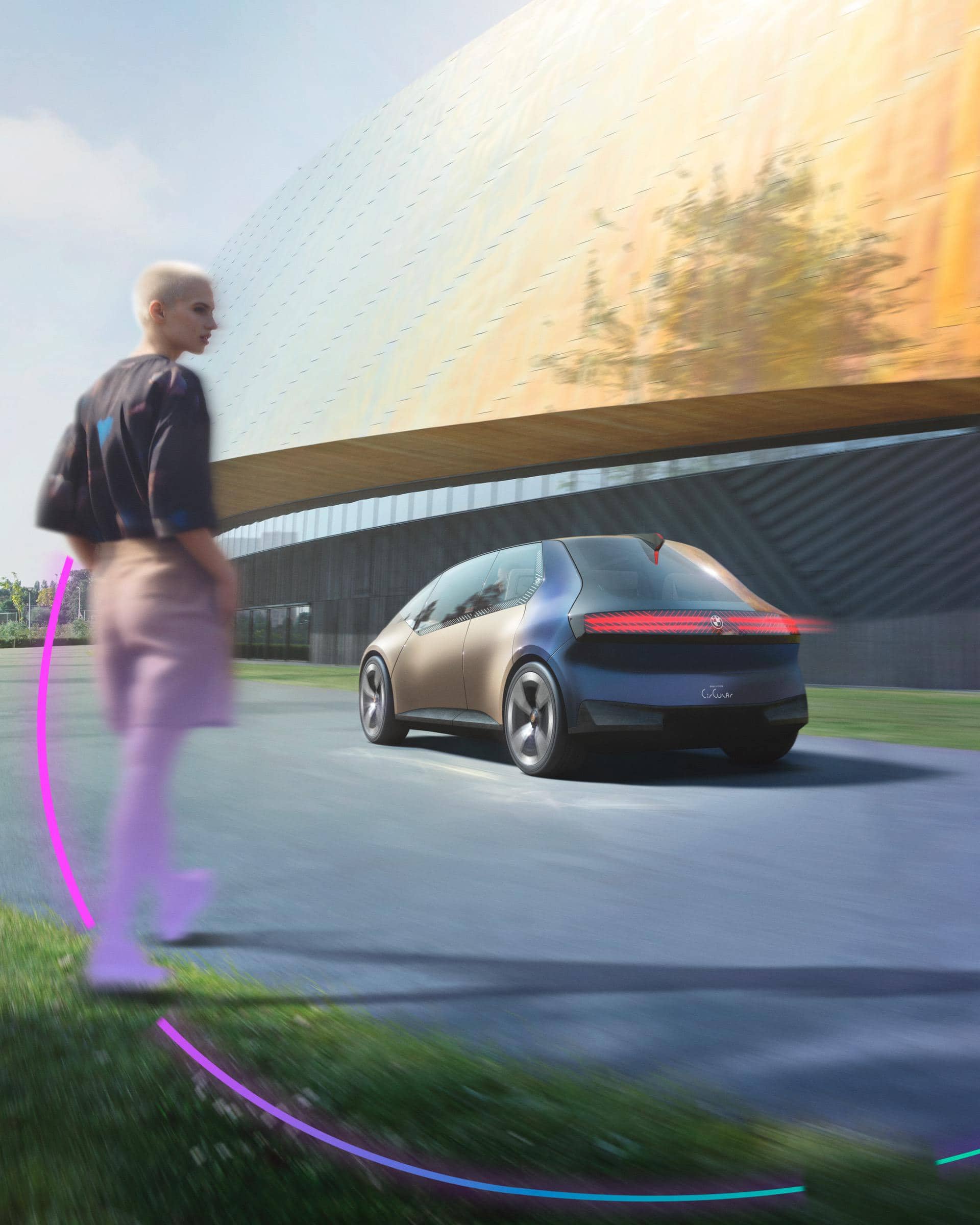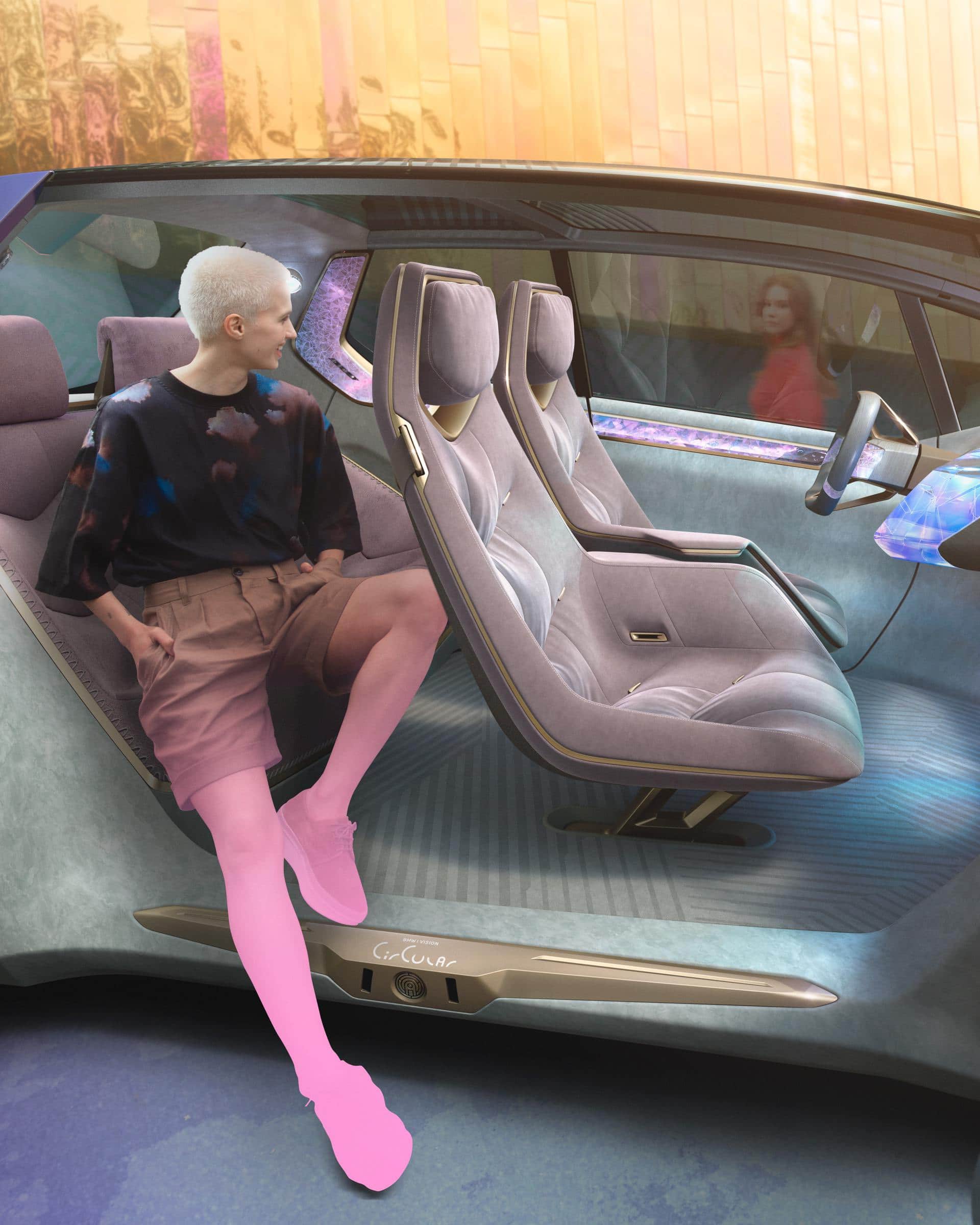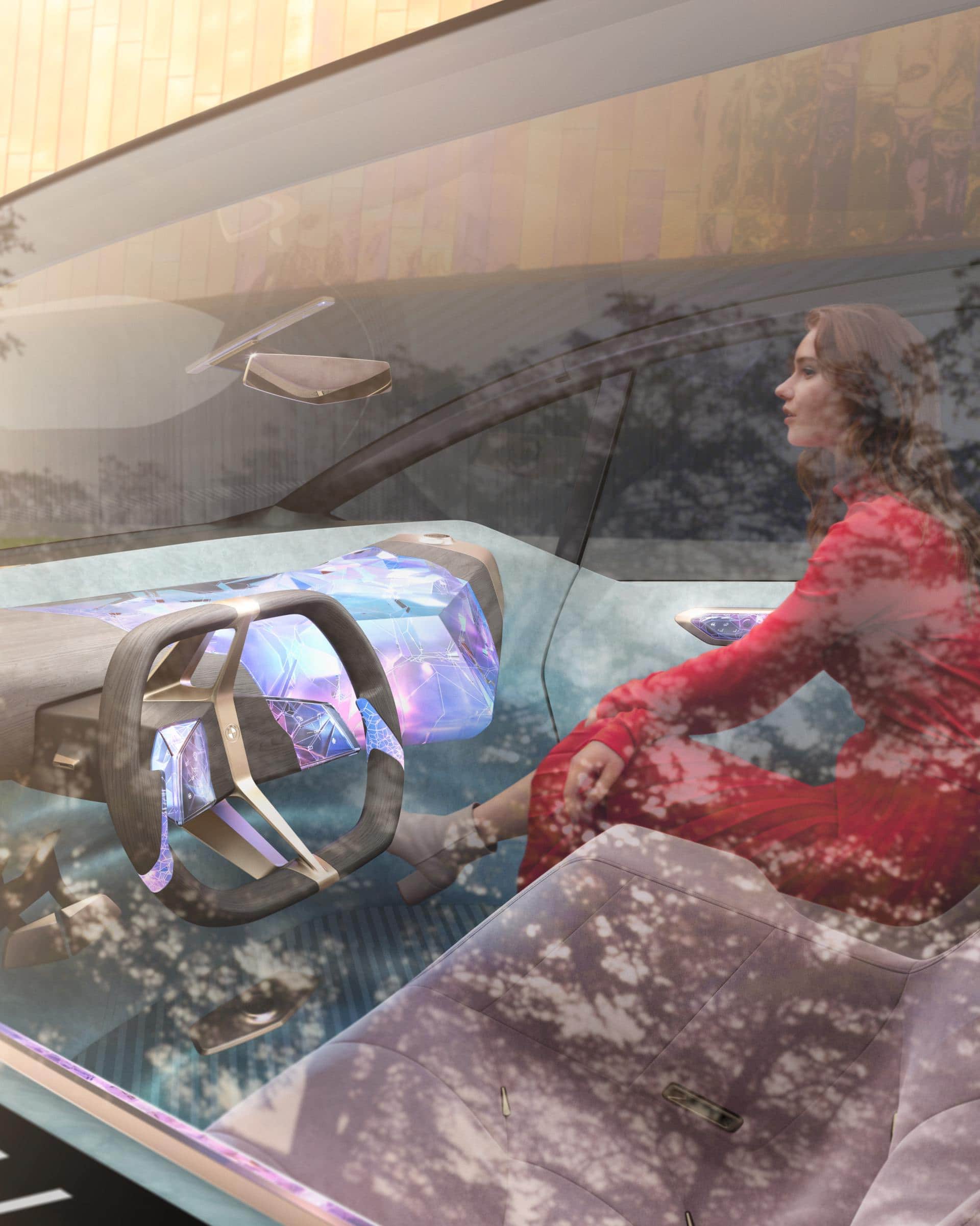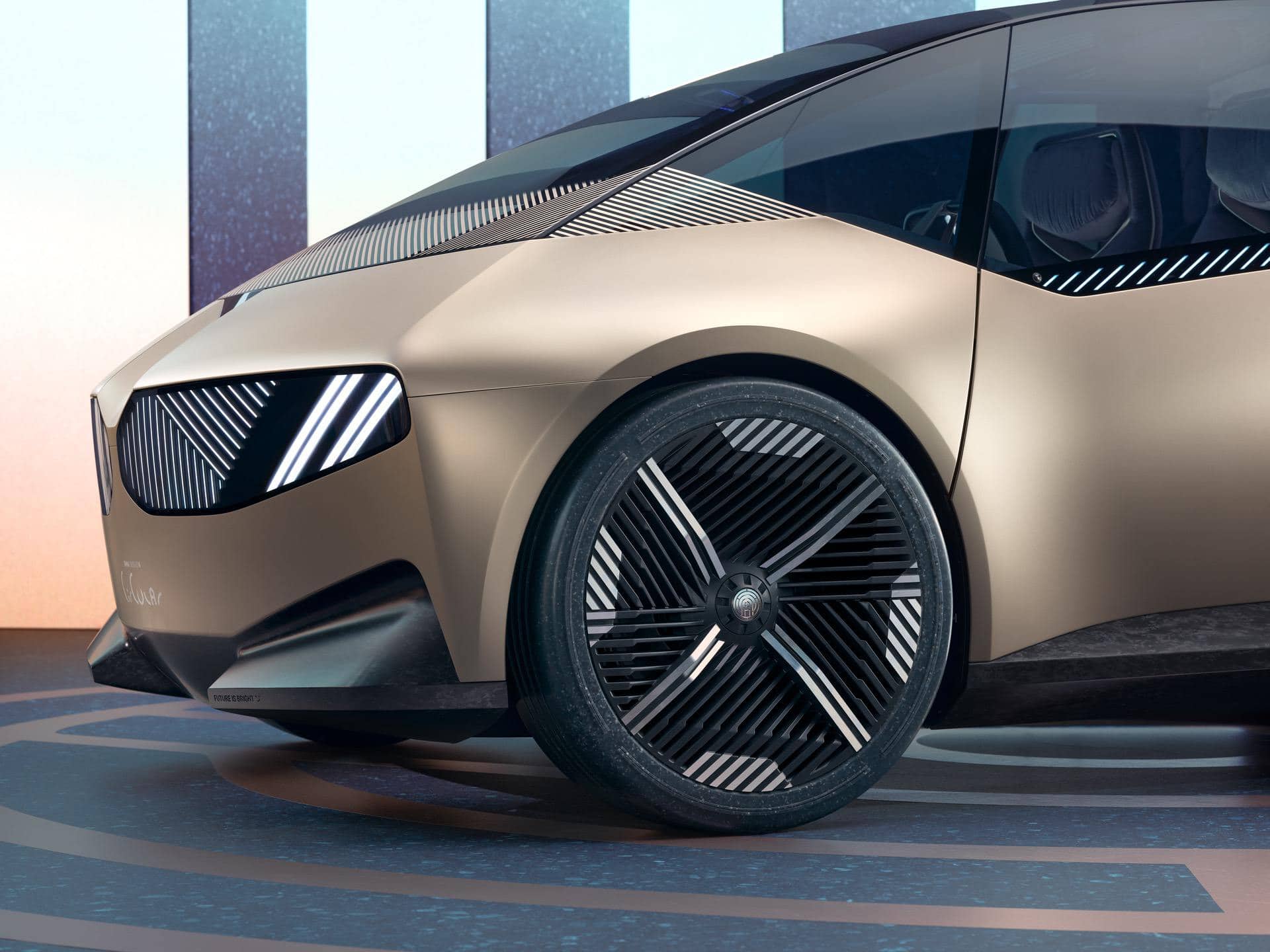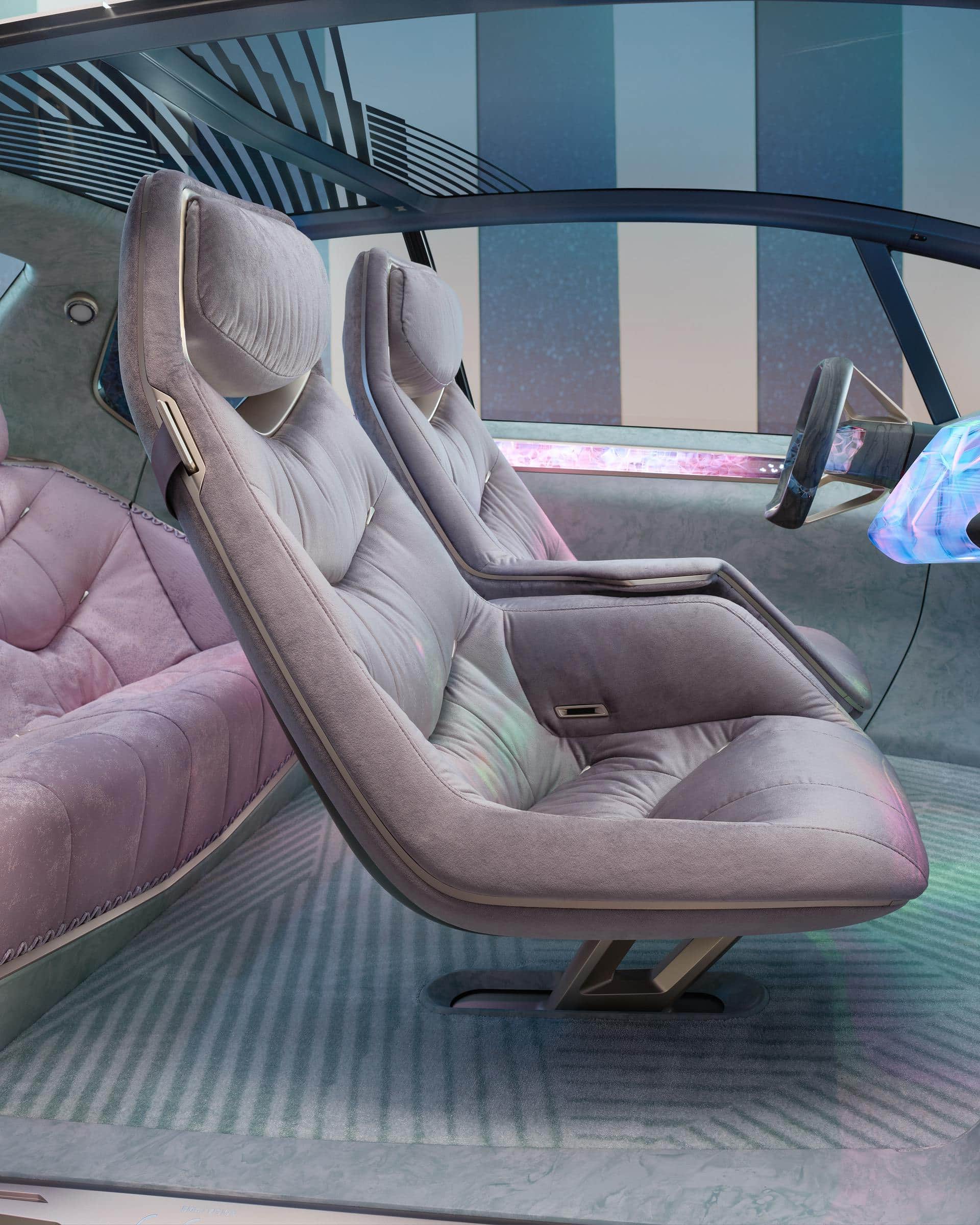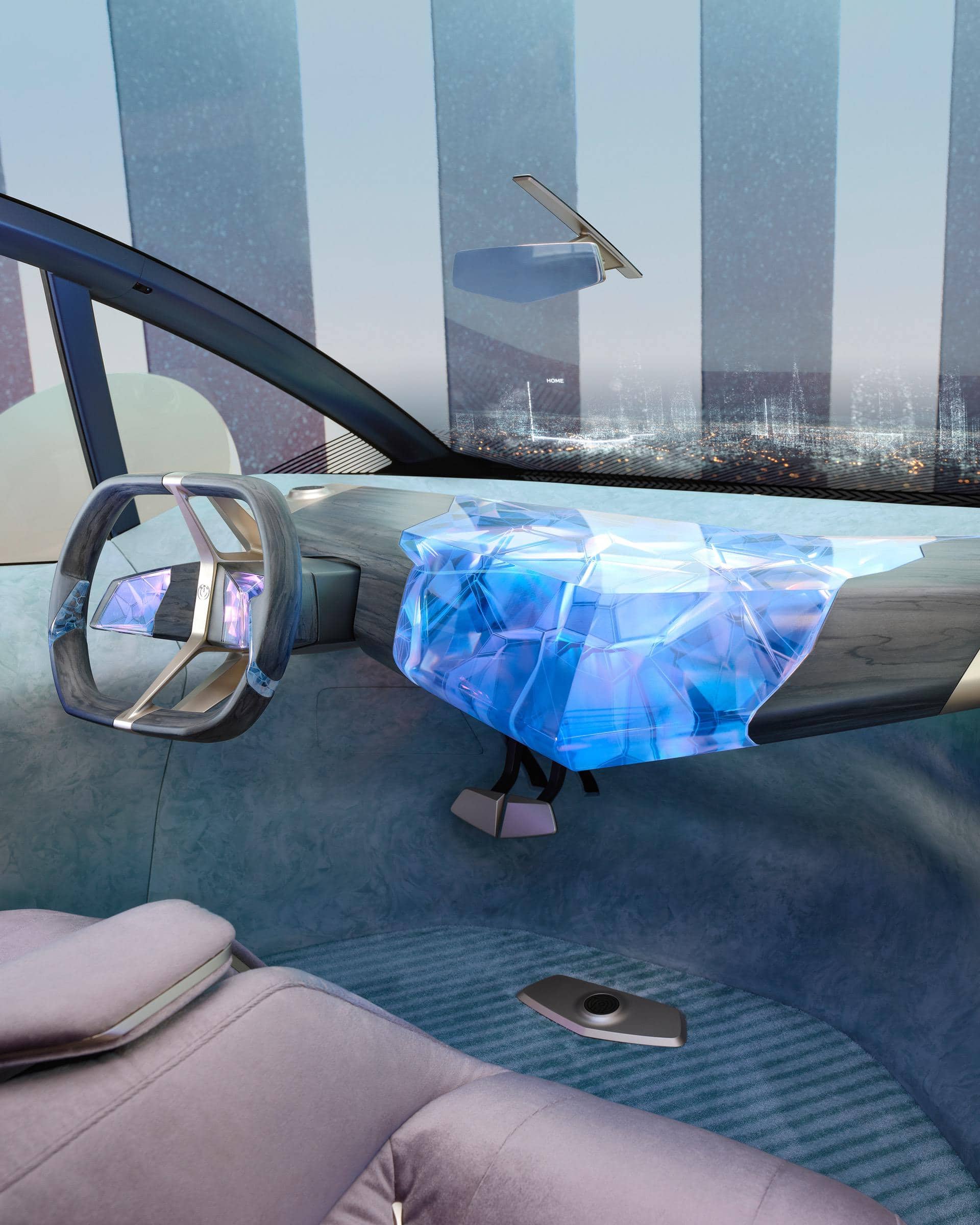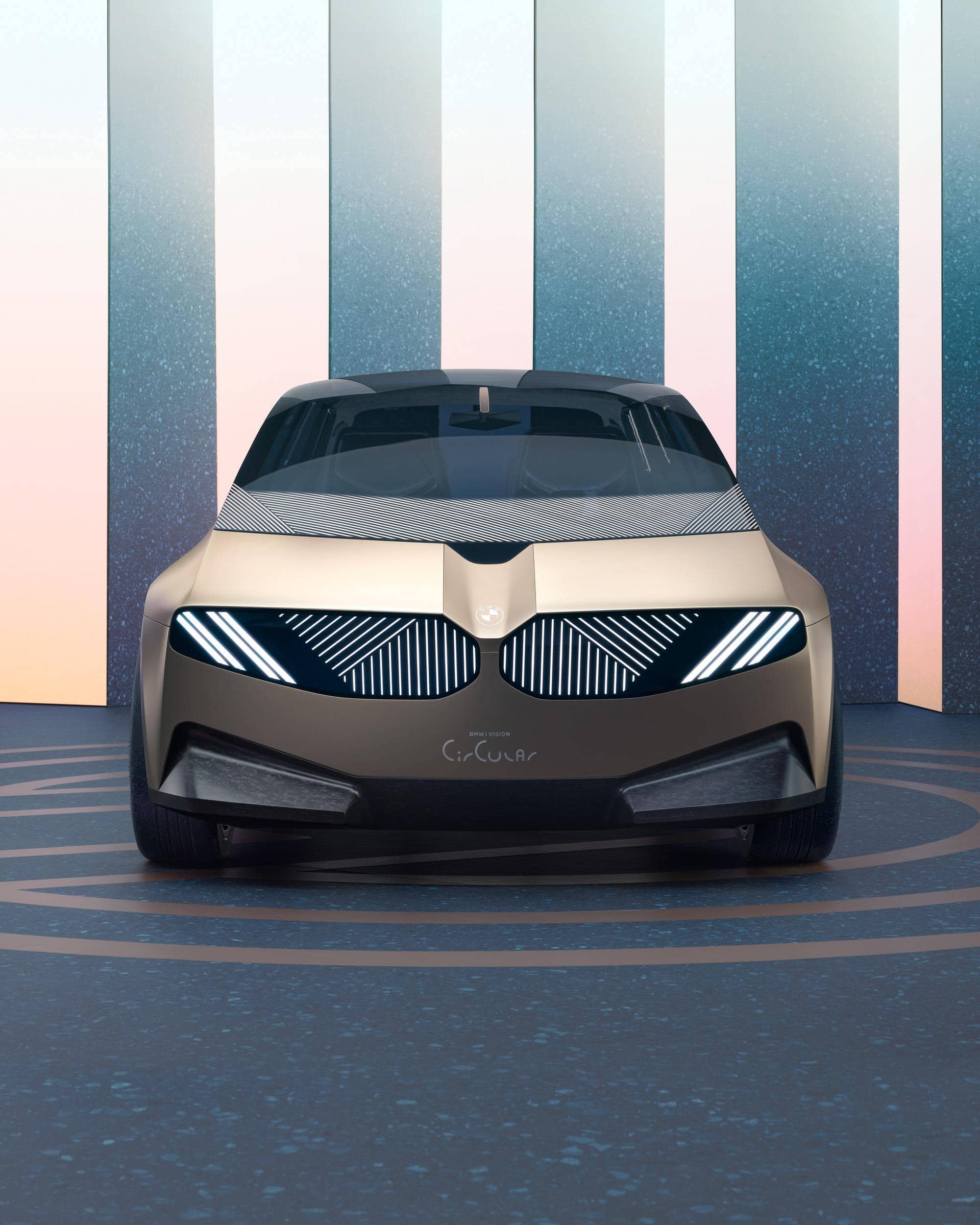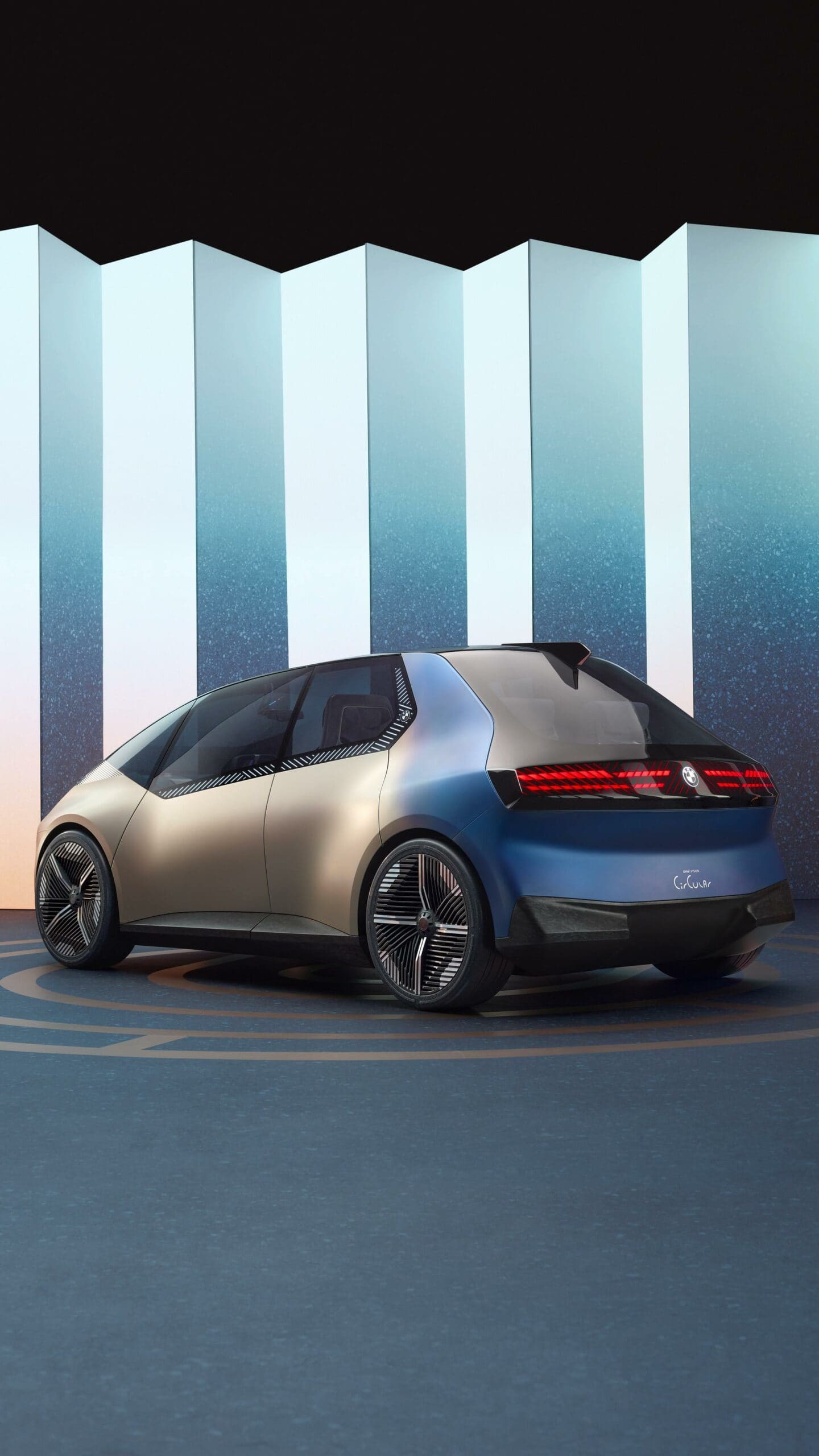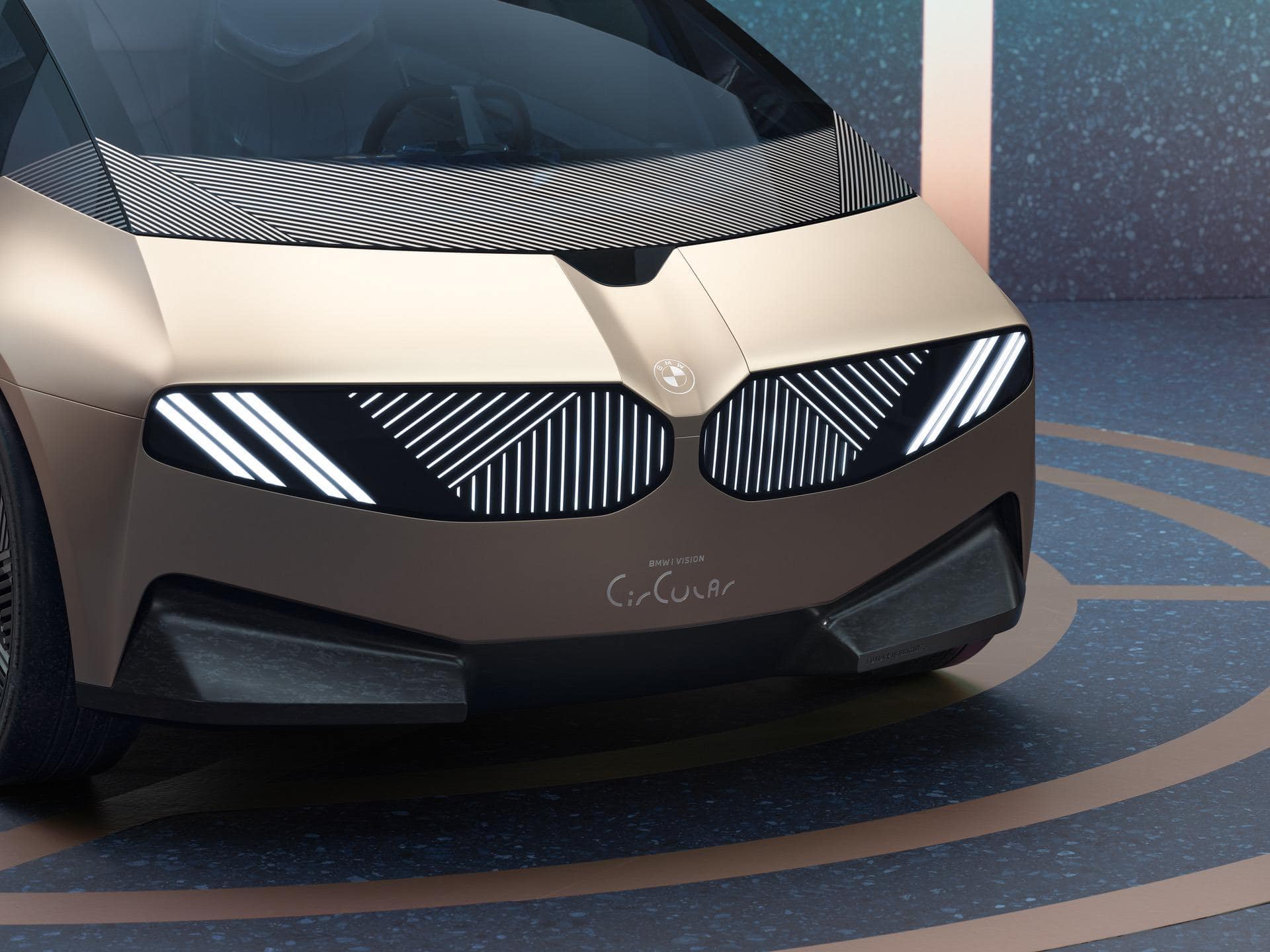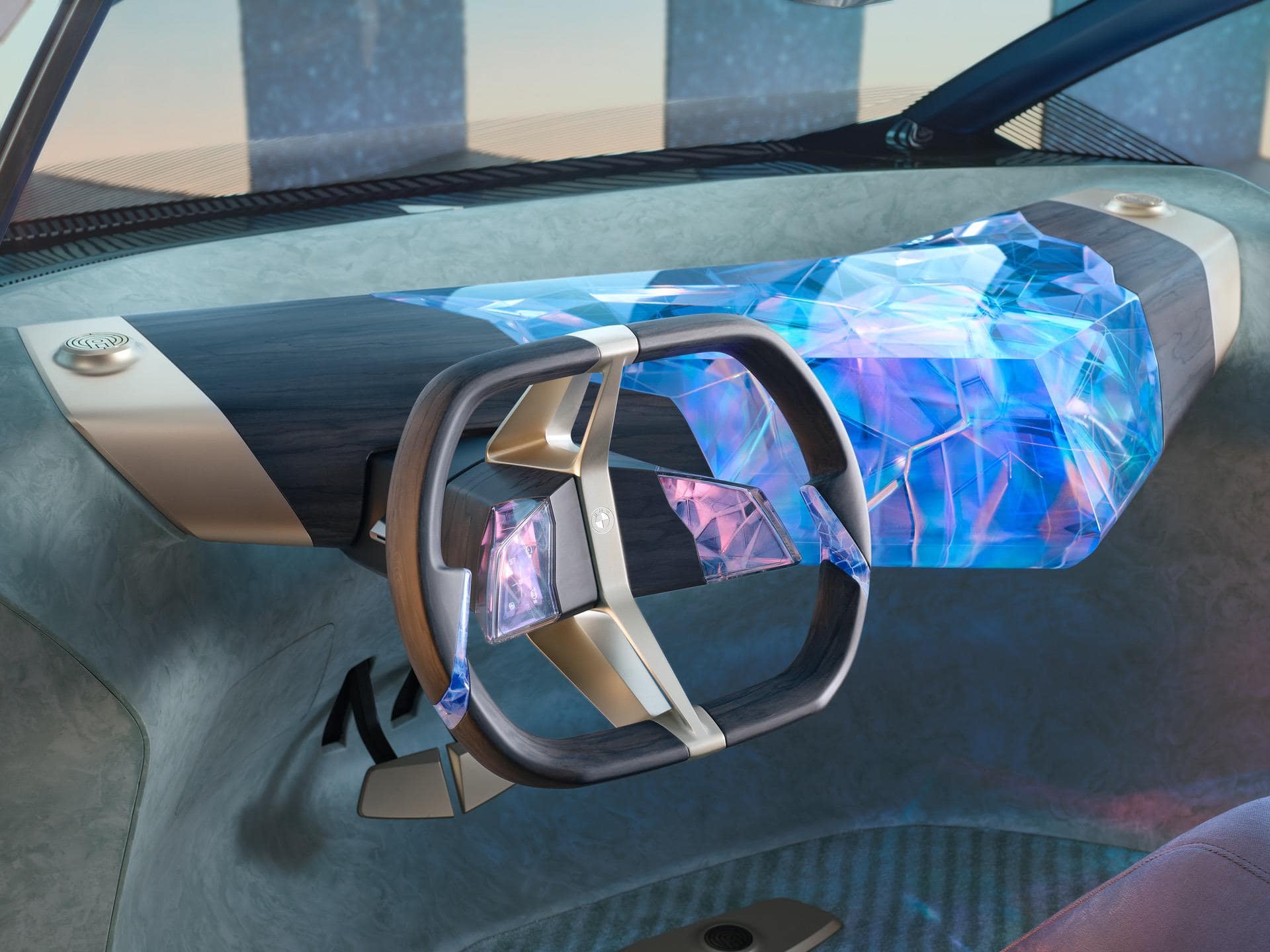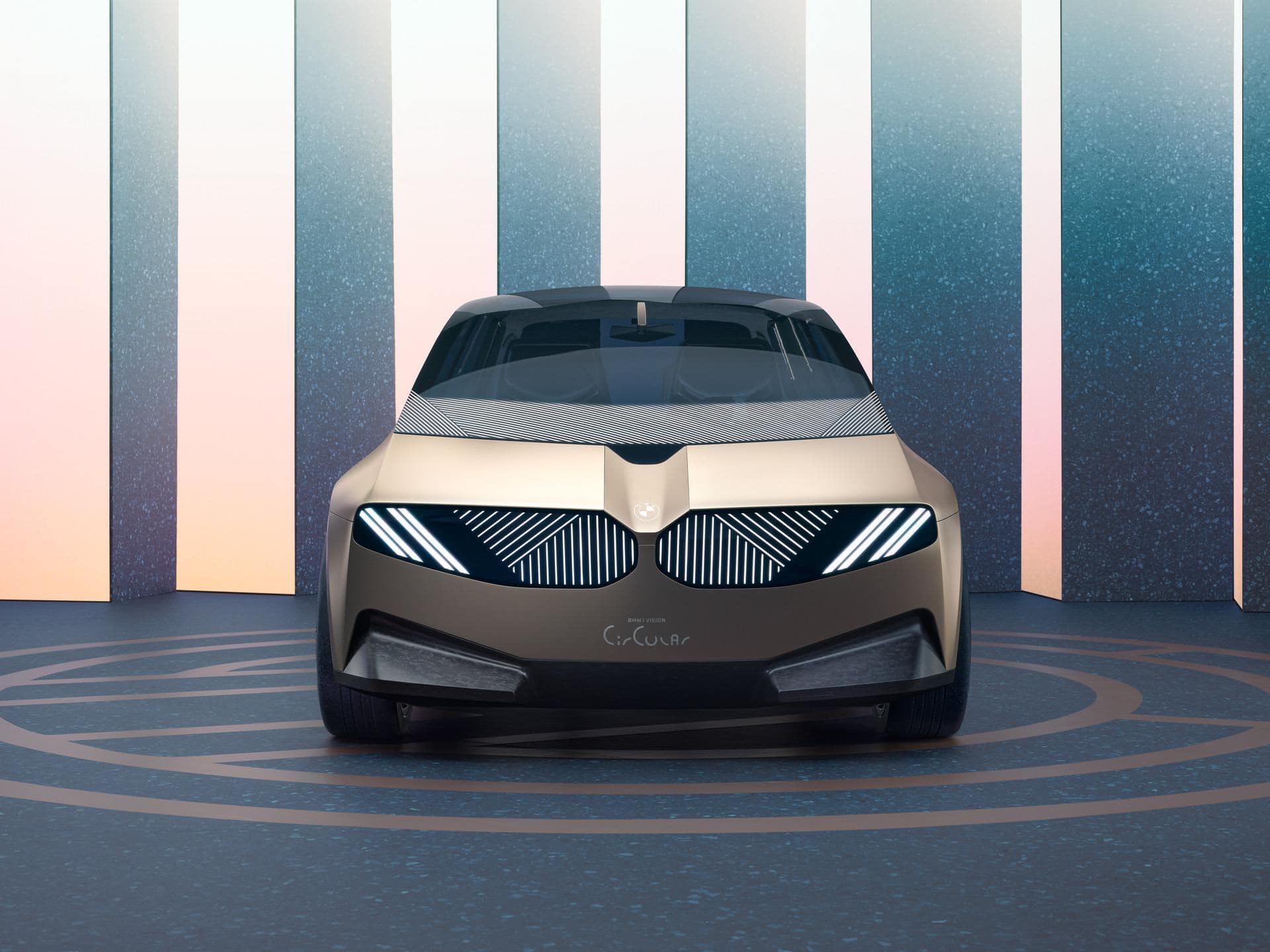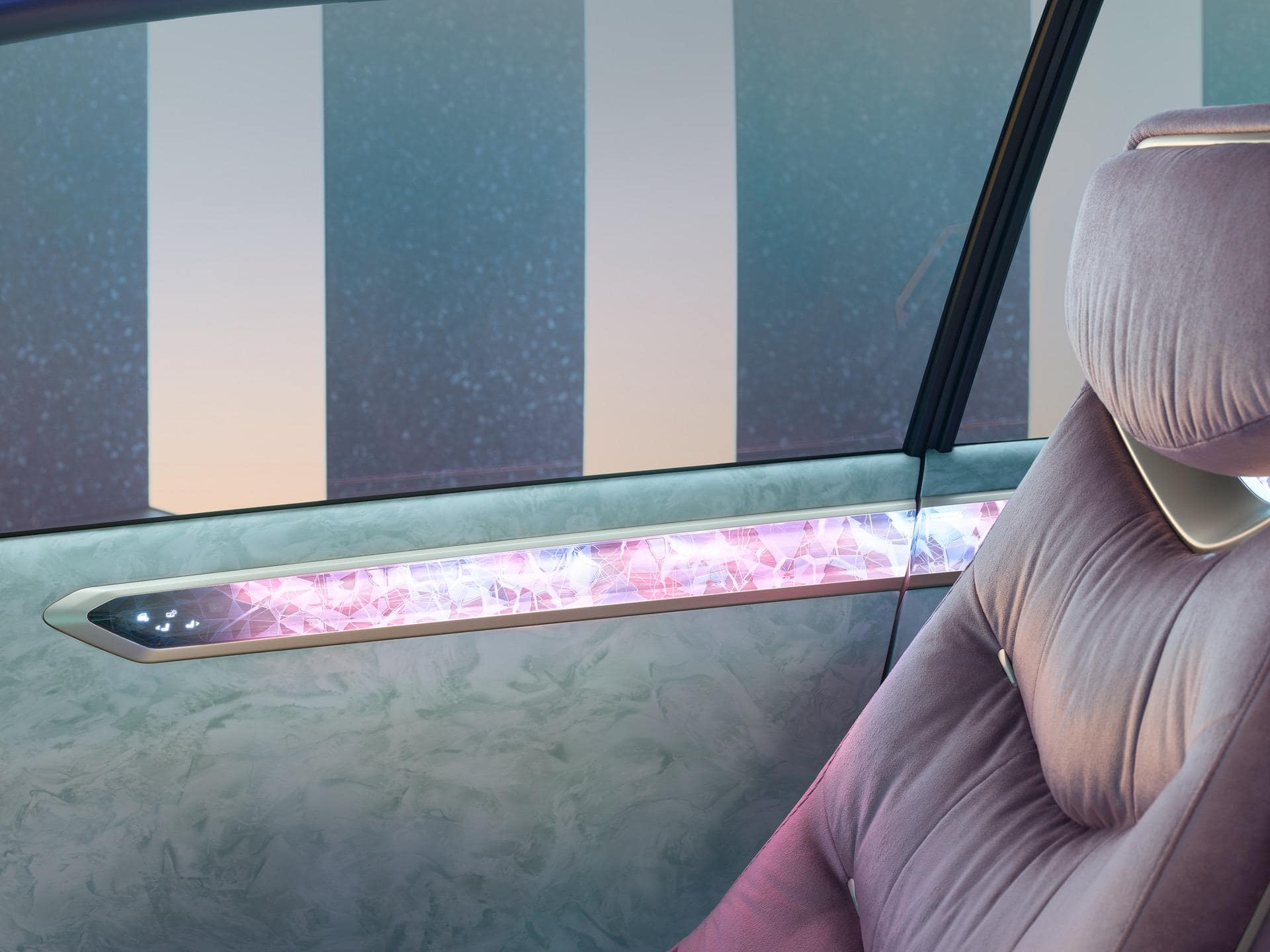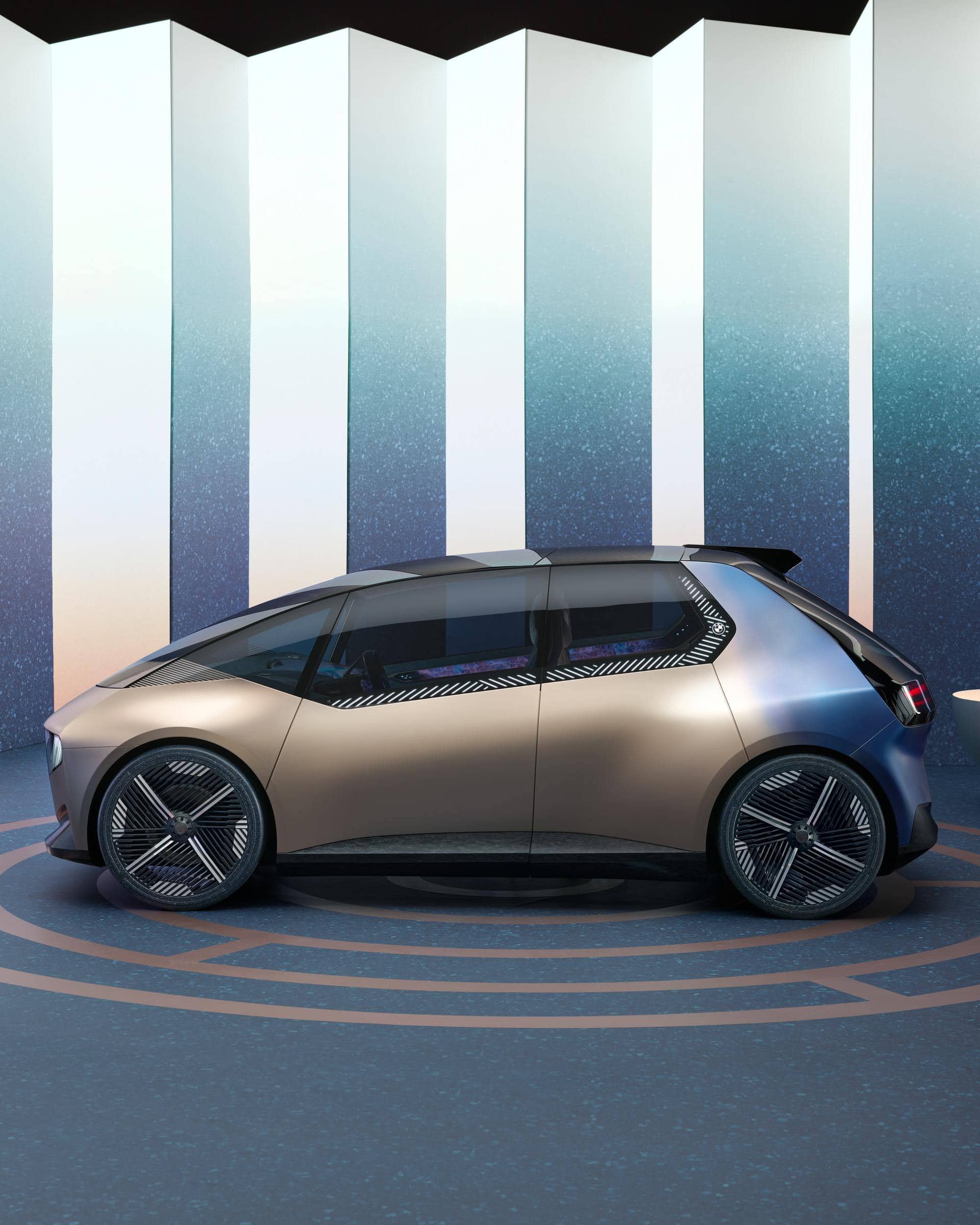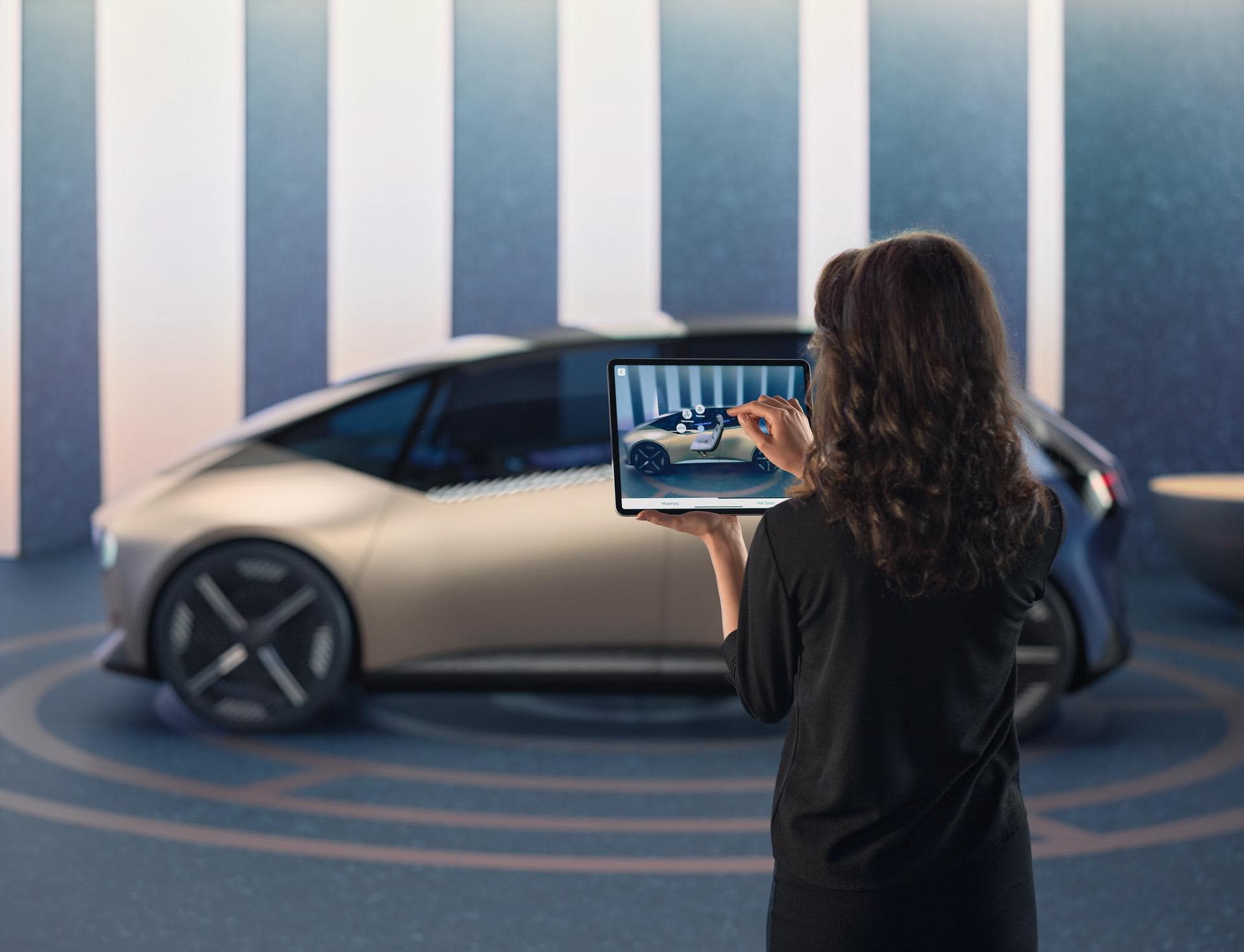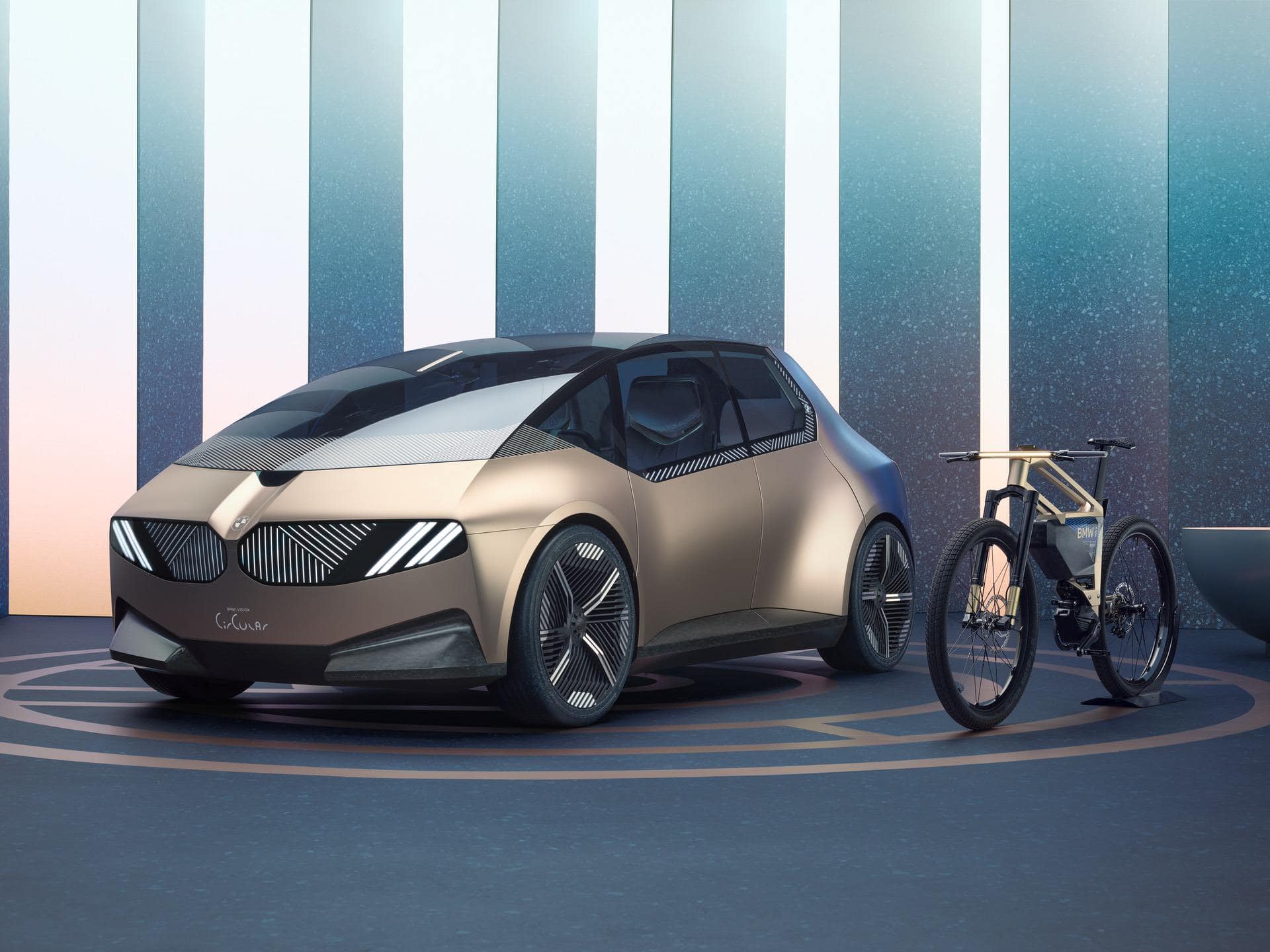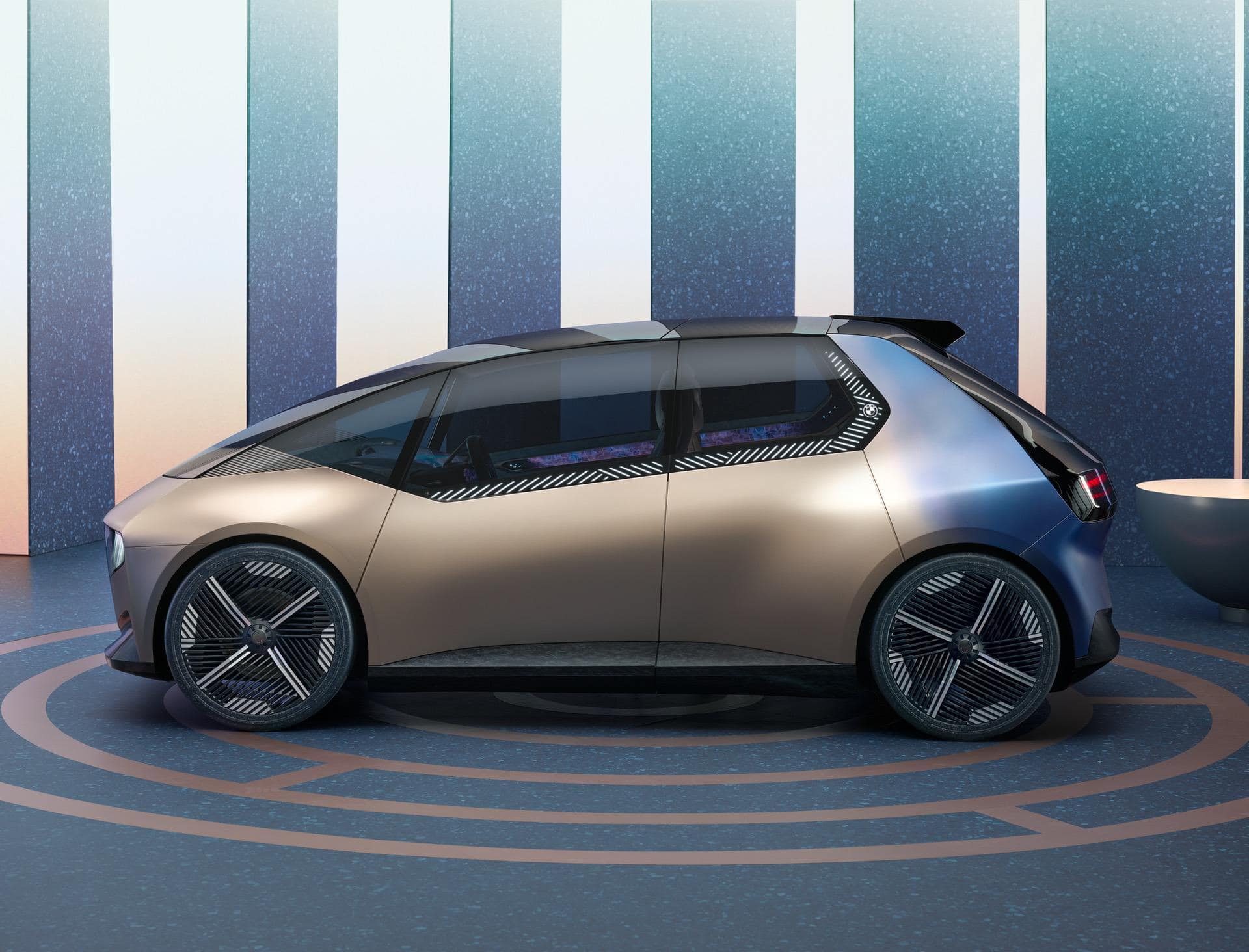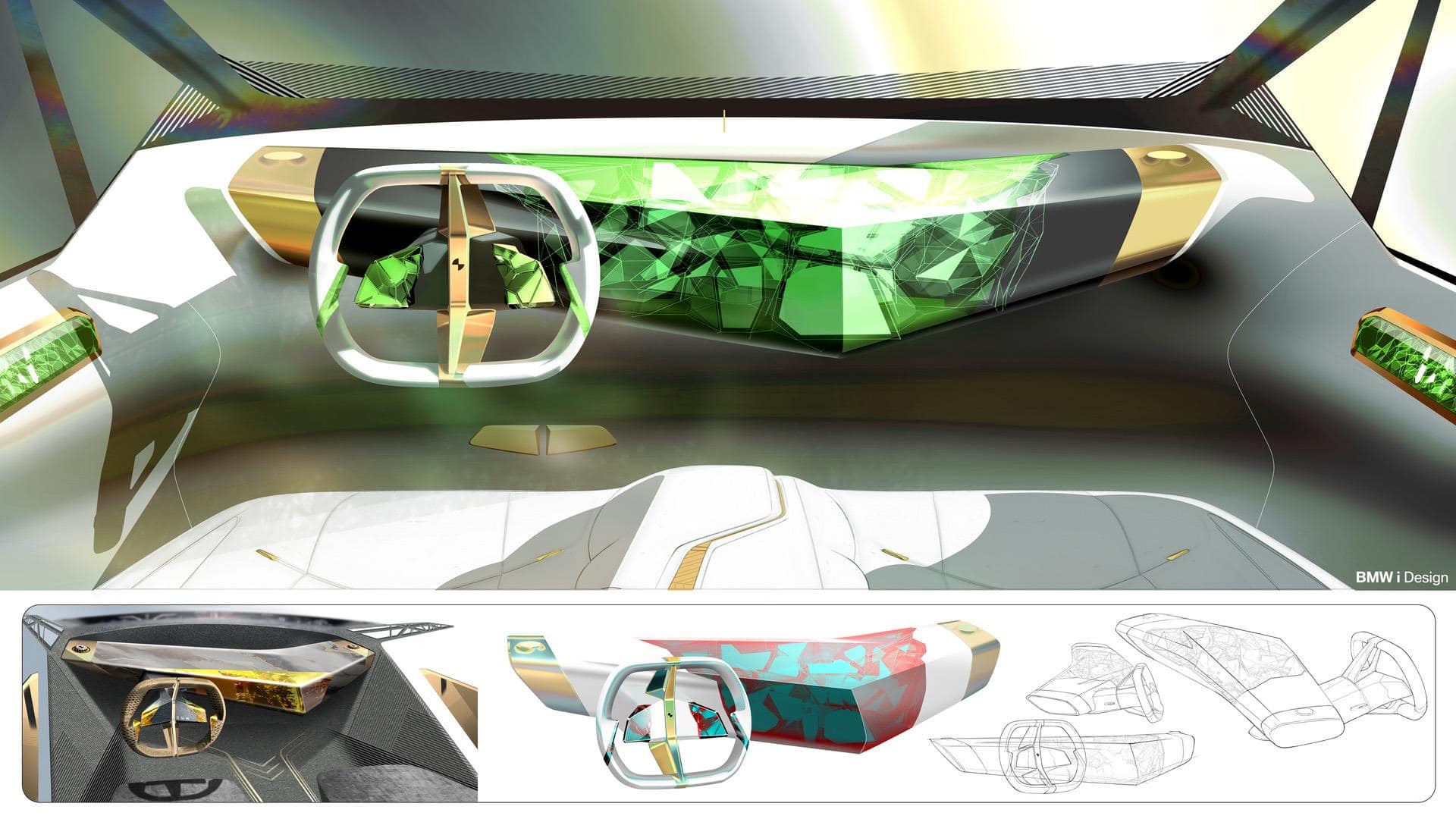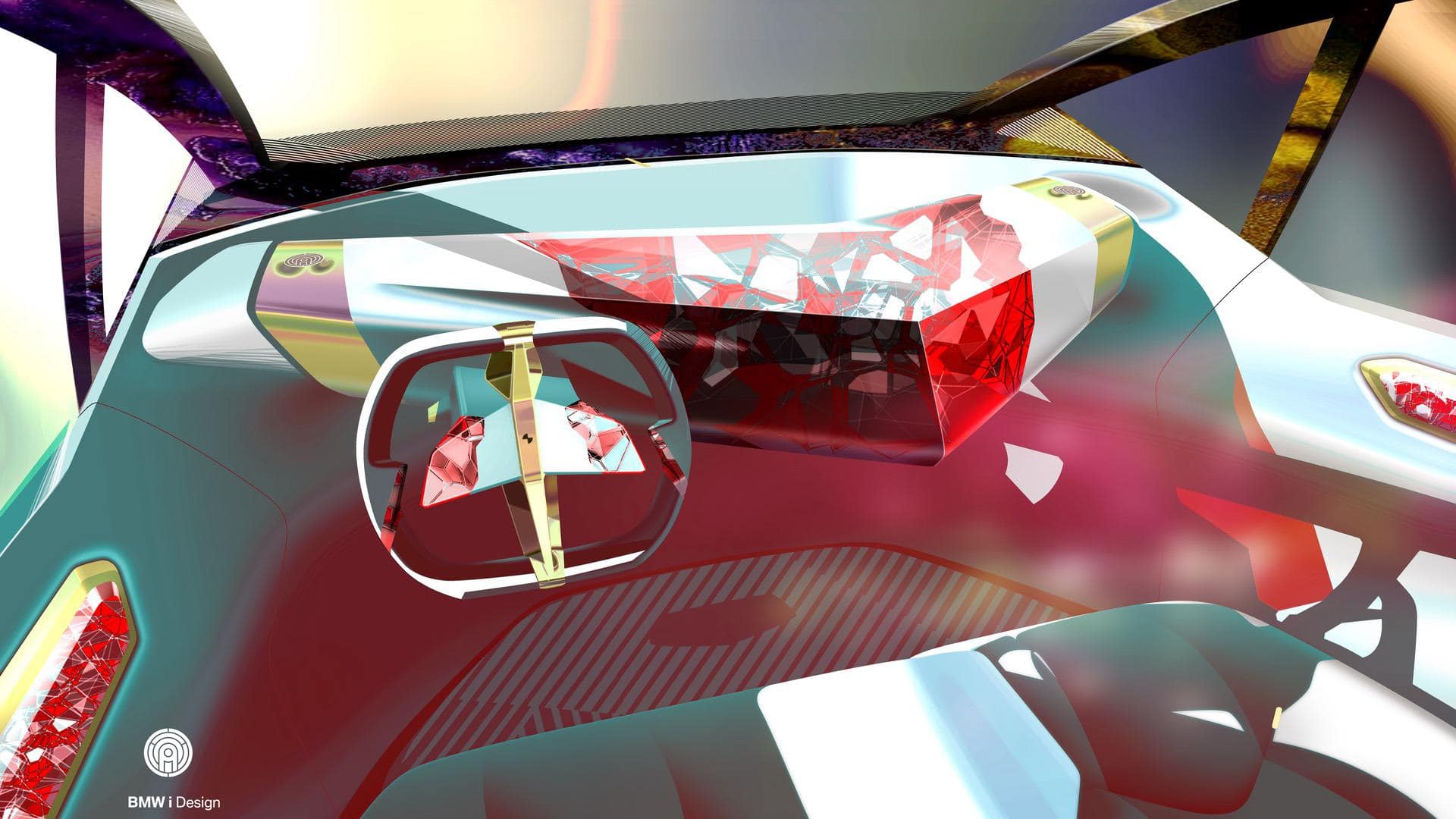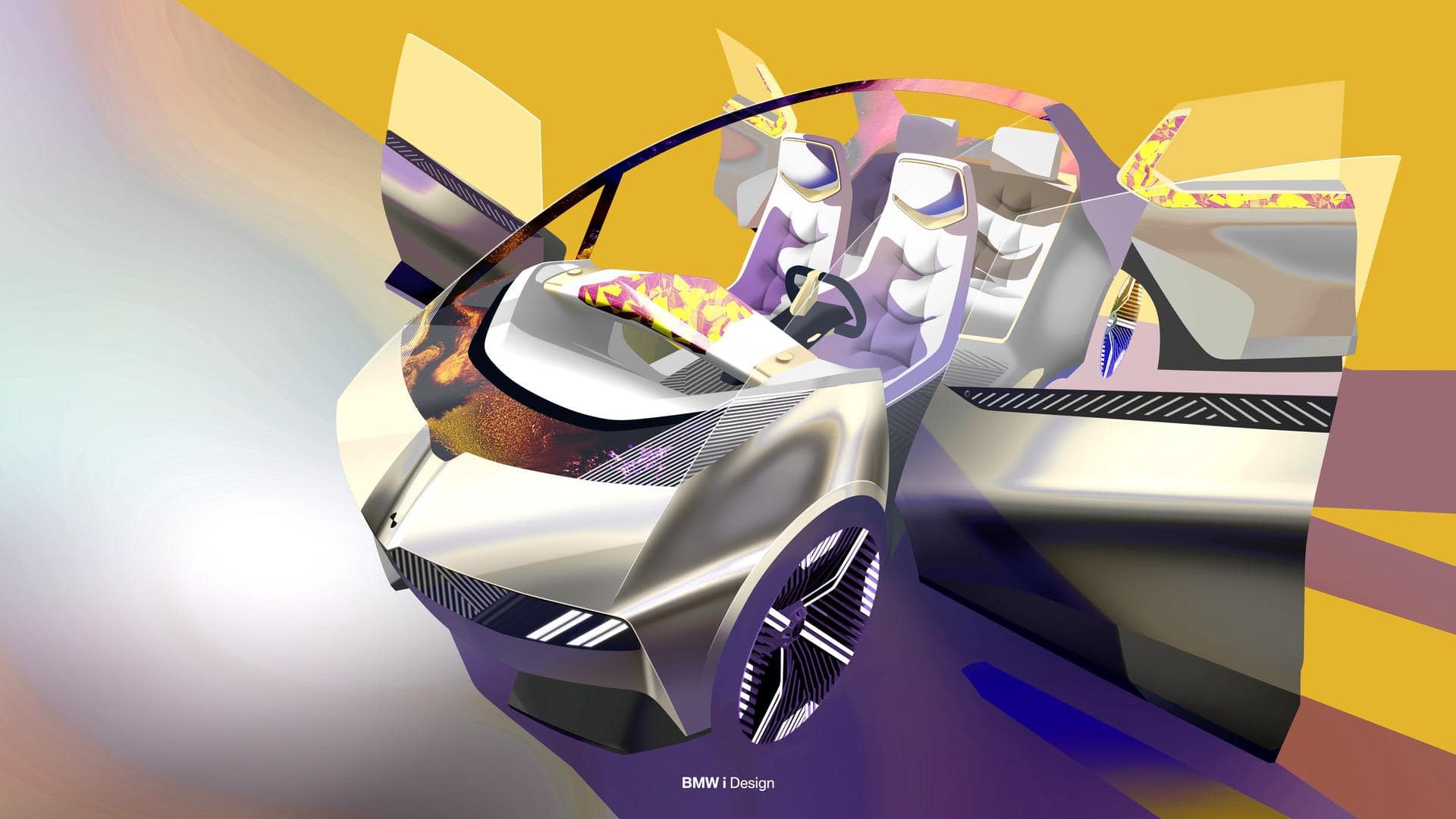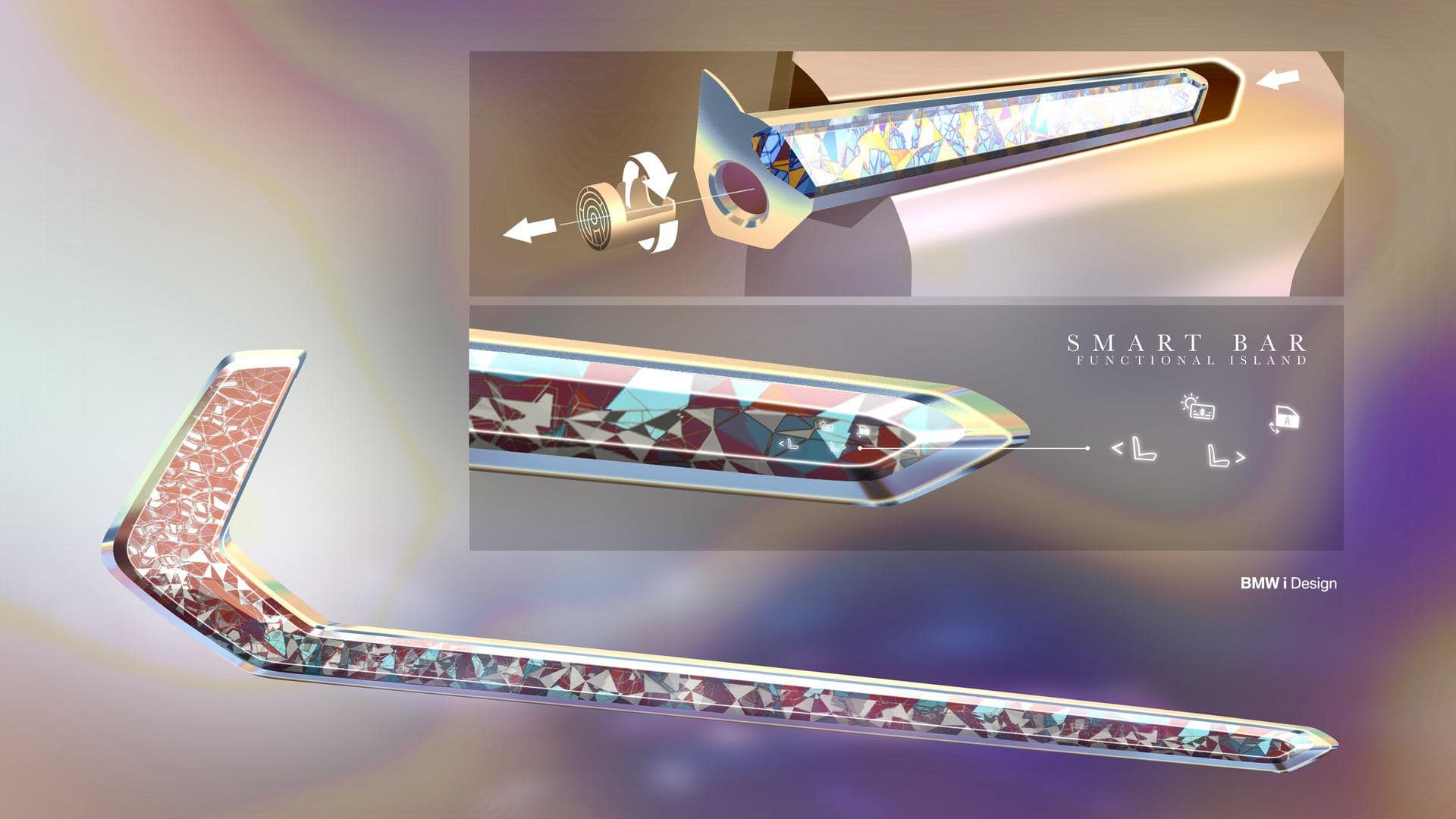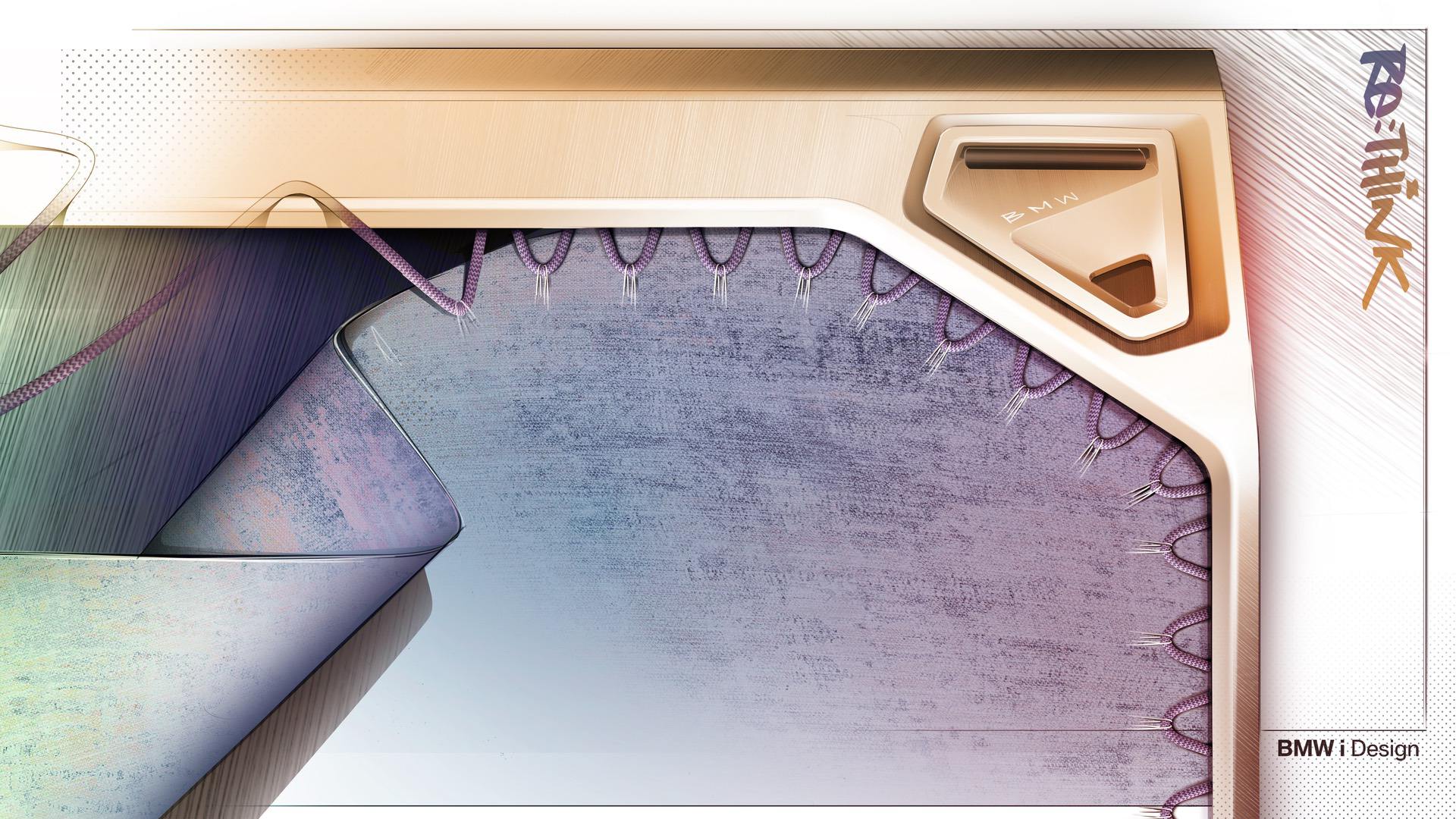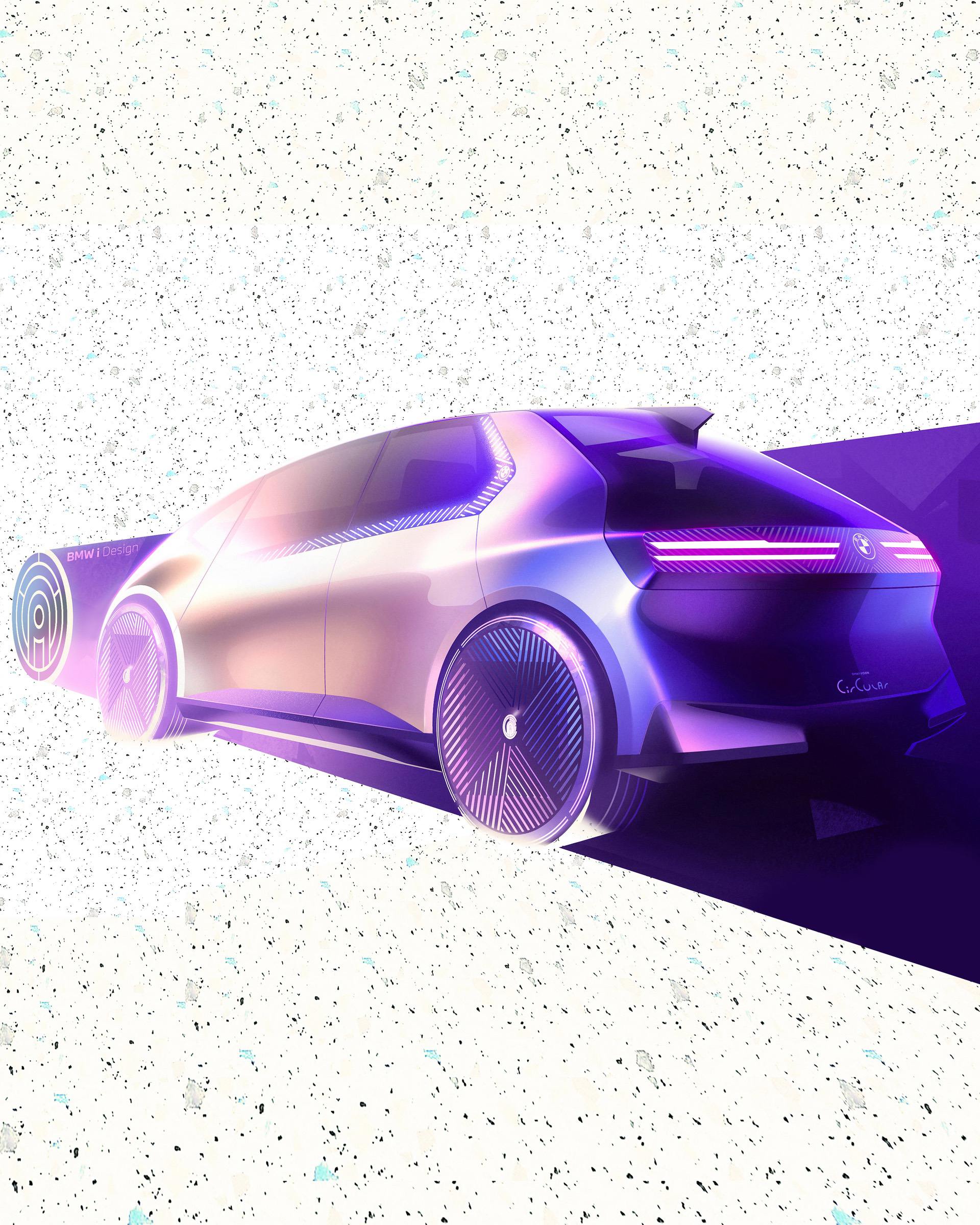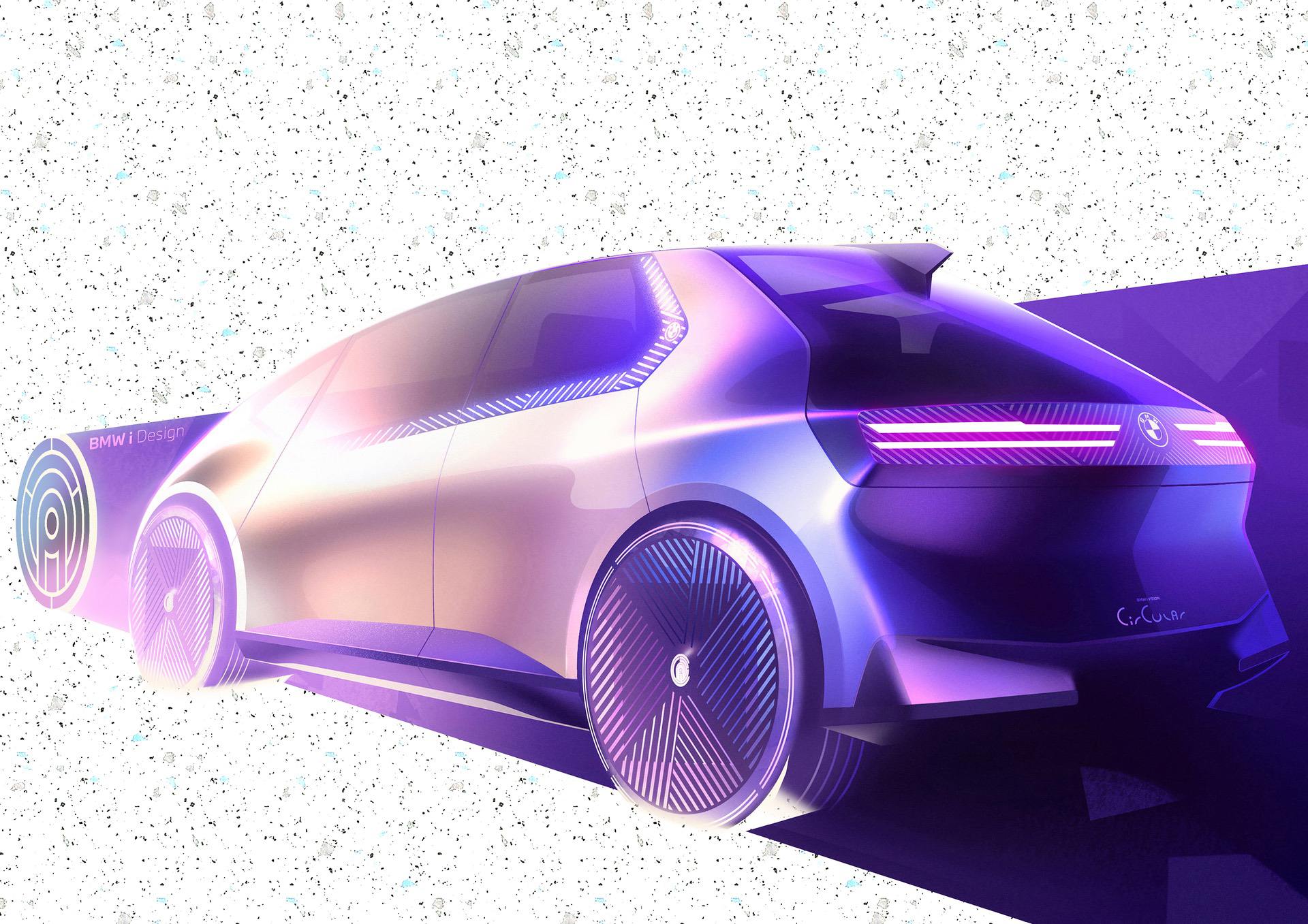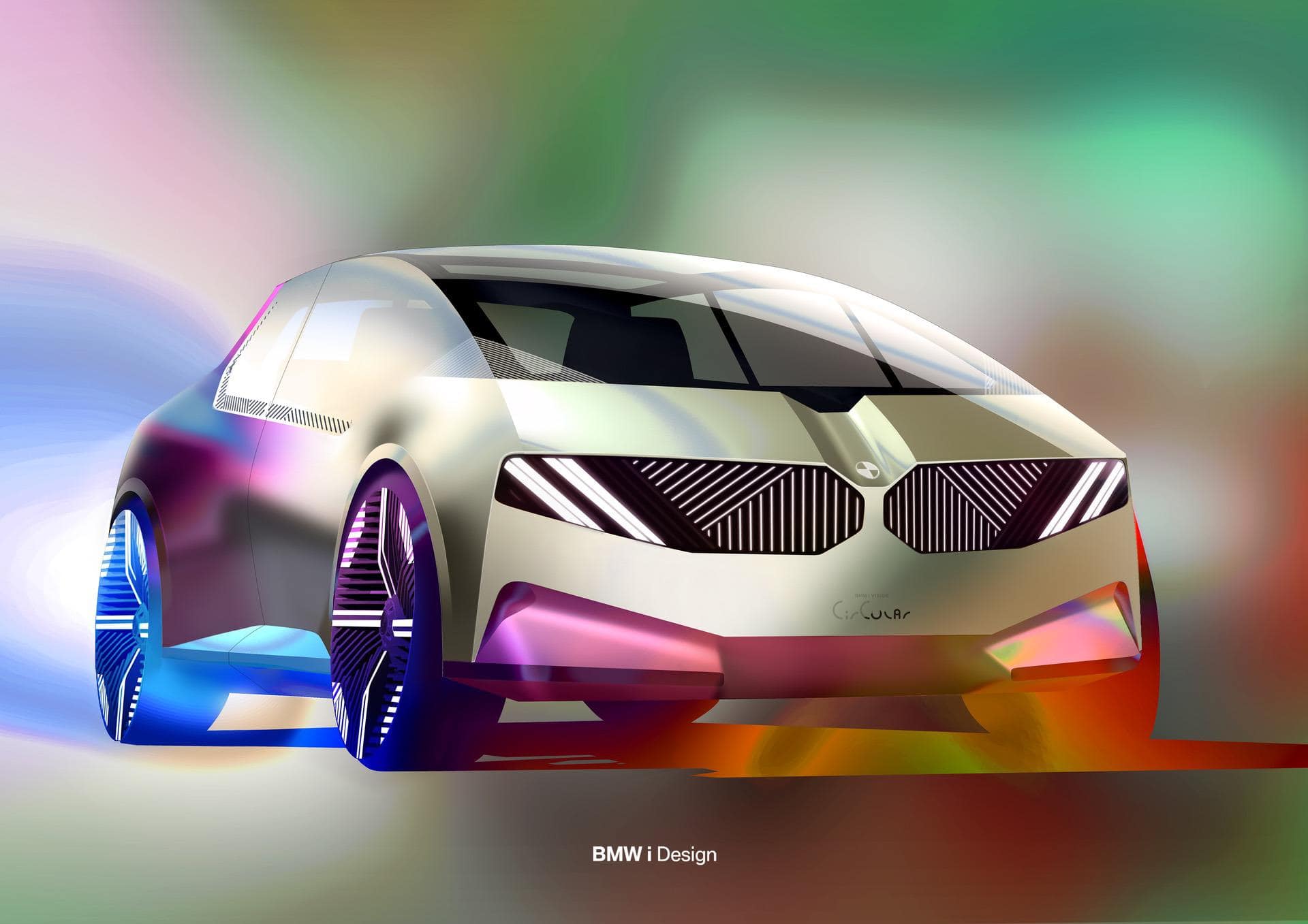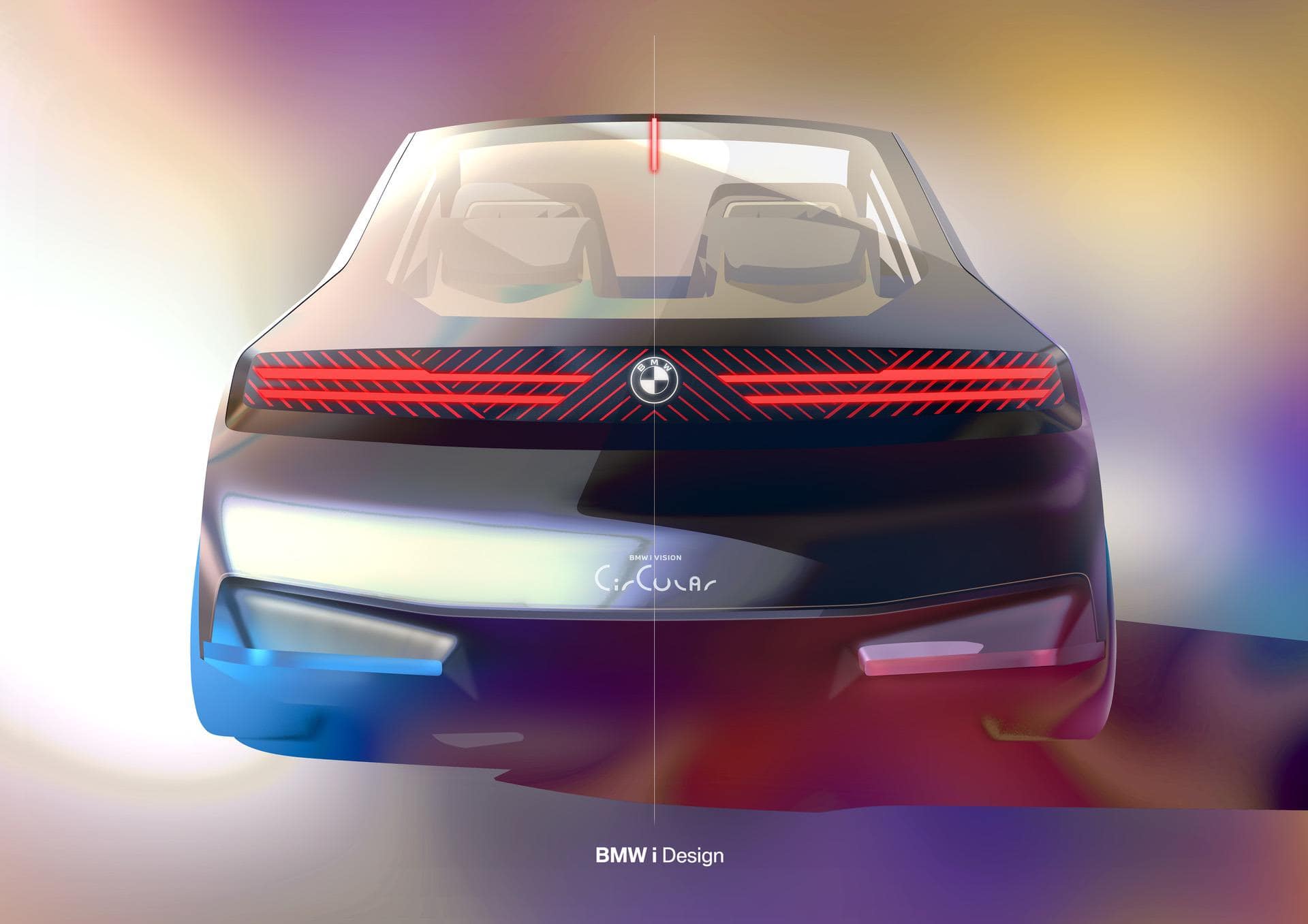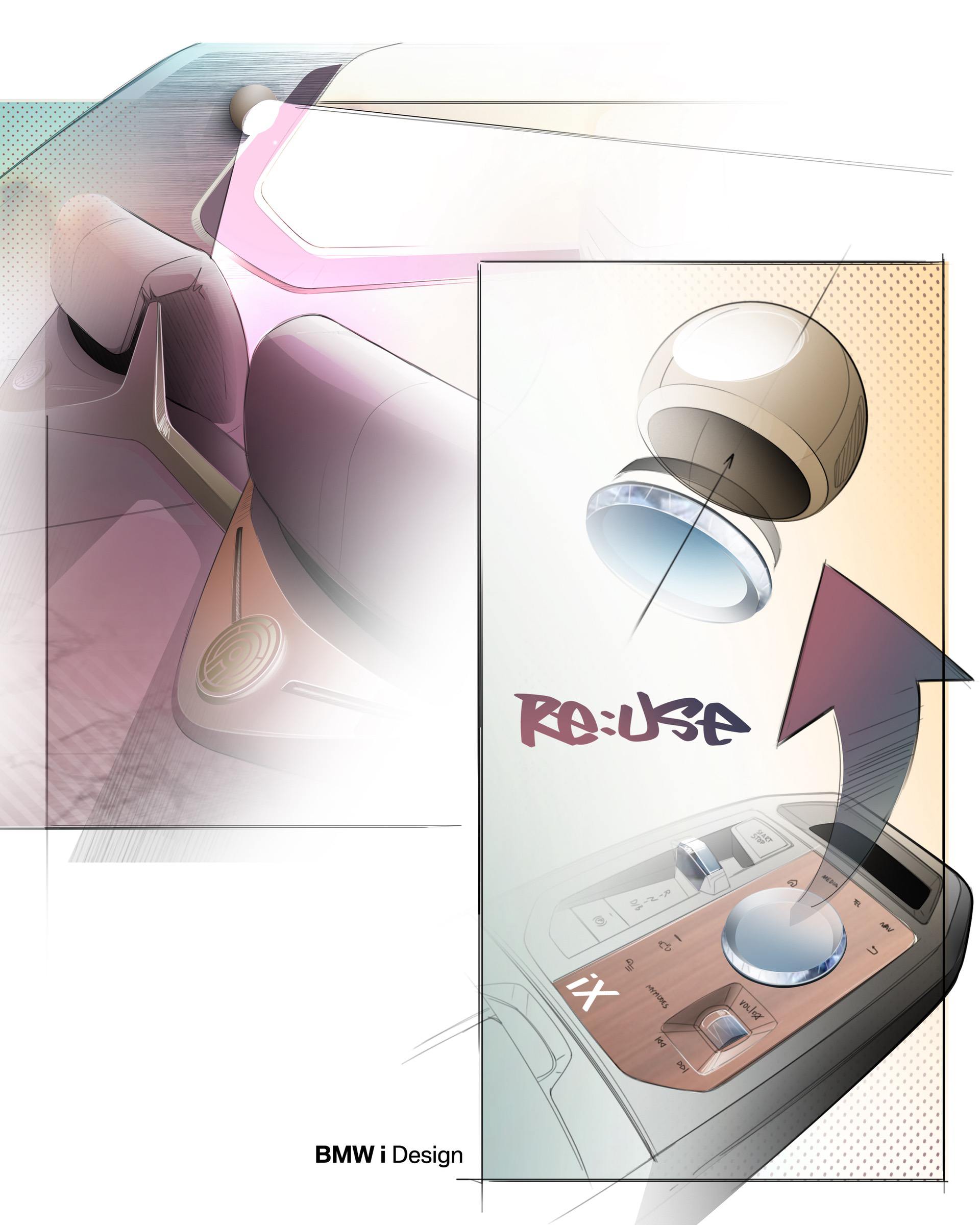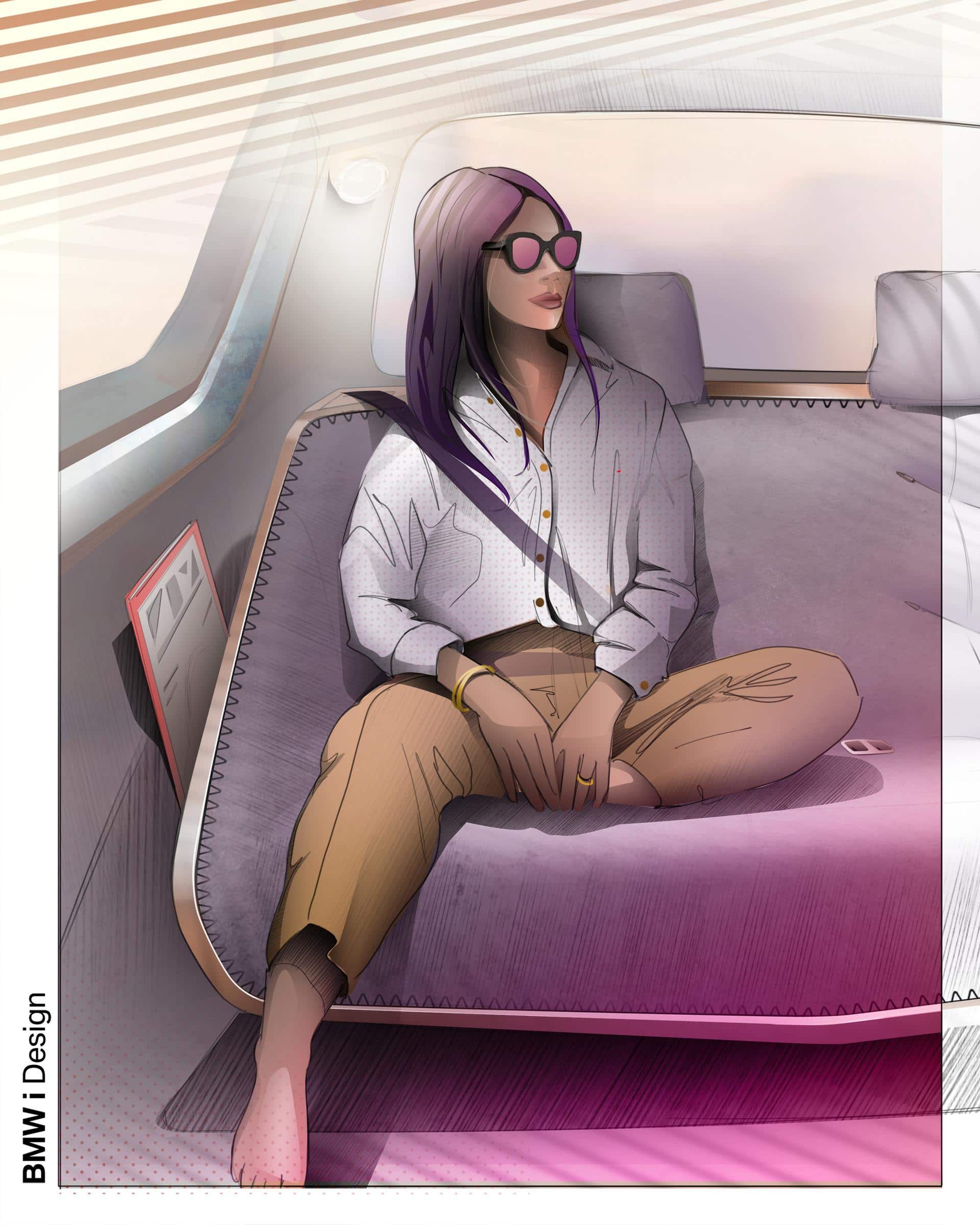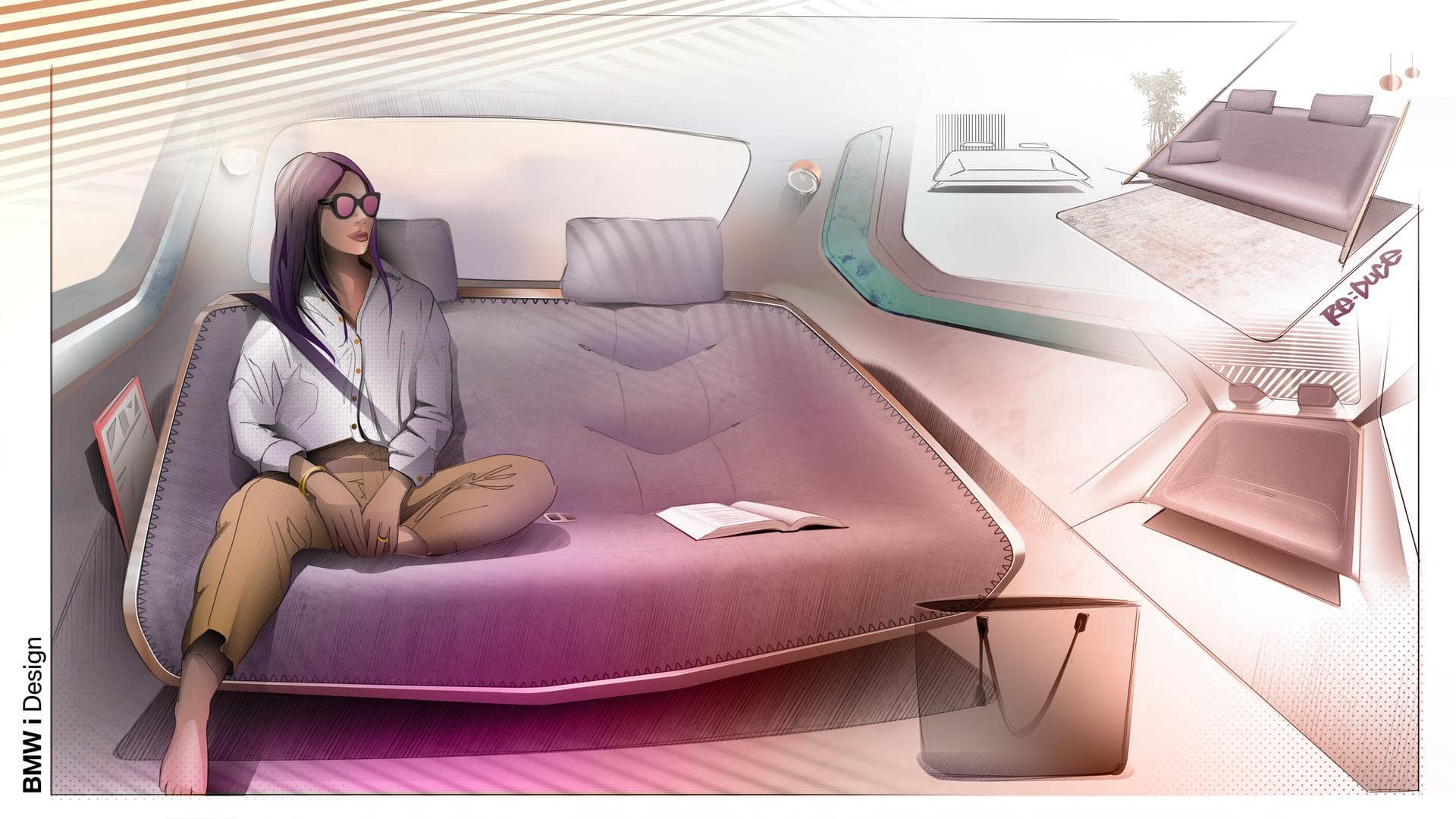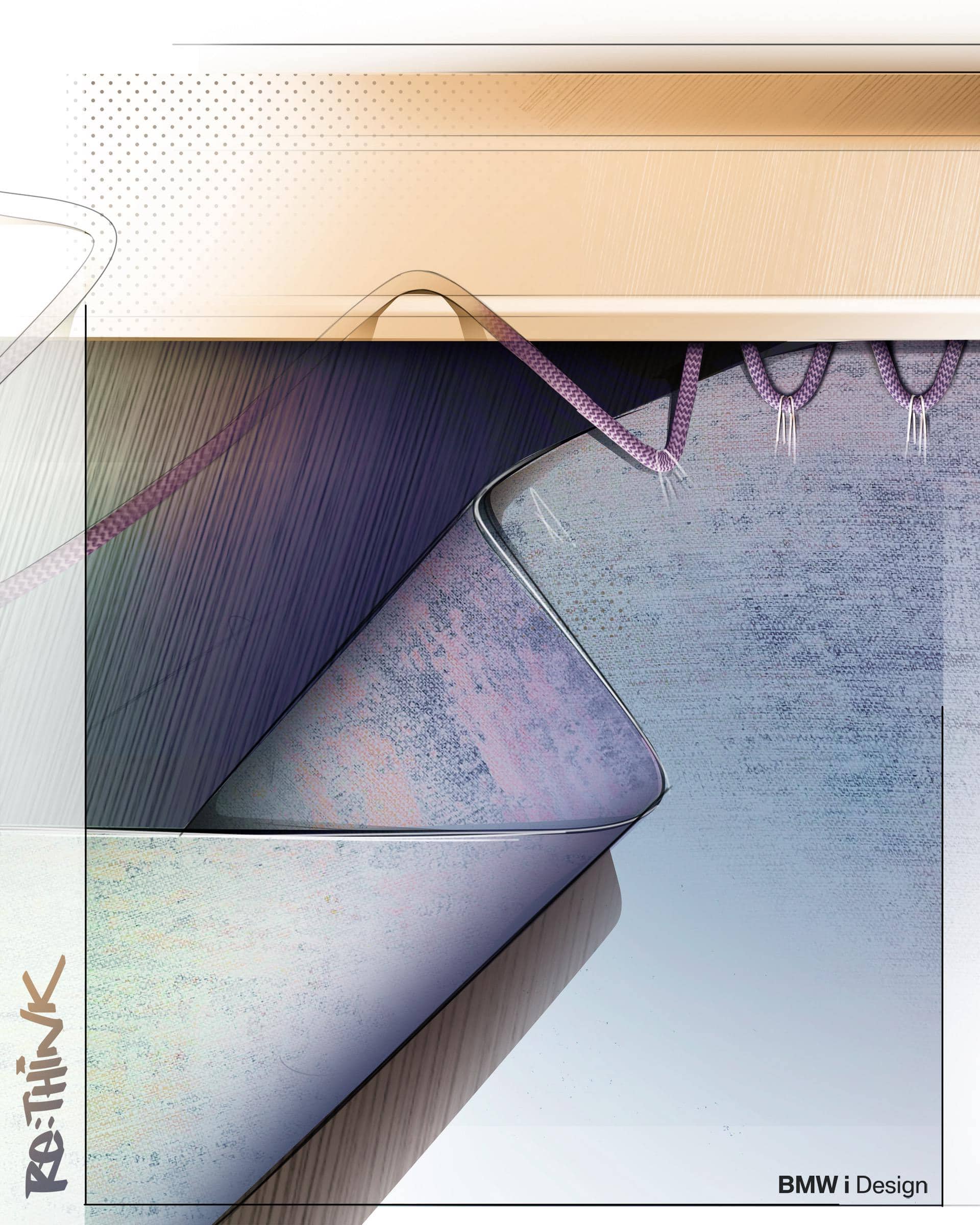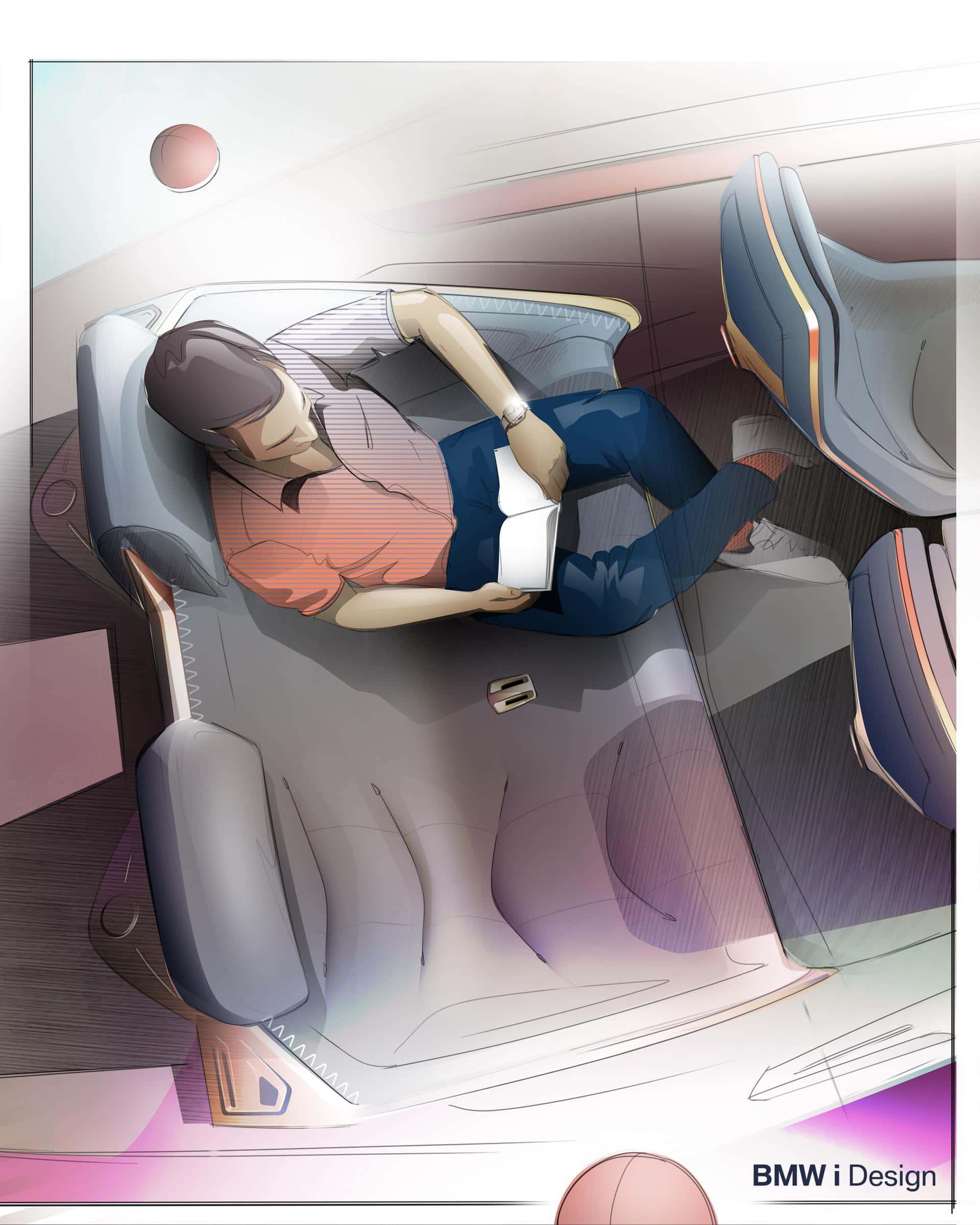While some brands are debuting highly stylized, high-powered car concepts for the future, BMW is going in a different direction at the 2021 IAA. The all-new BMW i vision Circular is a fully-recyclable concept car for 2040 with a focus on how to reuse materials to create a product with as little carbon footprint as possible.
At its core, the BMW i Vision Circular is a four-meter long, four-seat electric vehicle with a small visual footprint but a capacious interior. However, it’s far cleverer than that. Every single material used on the i Vision Circular is either a secondary material — a material that’s already been used in another product’s life cycle — or one that’s sustainably sourced and recyclable.
Even the manufacturing process is different; no bonding or composite materials are used in the manufacturing of the Vision Circular. Instead, clever fasteners such as cords, press-studs, and quick release fasters are used. Even the wheels get center lock fasteners, with a specialized socket wrench remove them, thus reducing the amount of materials needed to secure the wheels to the hubs. More than that, the same socket wrench can be used to remove several other components of the vehicle, again reducing the materials needed.
Taking things even further, the BMW i Vision Circular’s body isn’t even painted. Instead, the secondary aluminum that makes up the main body shell gets a light gold anodized finish, dubbed Anodized Mystic Bronze. The back end of the body is made from a heat-treated steel, called Temper Blue Steel, to give a contrasting color at the back.
Even the tires are not only recyclable but also colored in an unusual manner. They’re made from what BMW calls “Vivid Blue Rubber” and are made from certified, sustainably cultivated rubber. Recycled rubber pieces are added to the tire compound for strengthening, which creates a terrazzo visual effect. The wheels the tires are mounted to are designed to be aerodynamic, while also creating effective brake cooling.
The BMW i Vision Circular is a funky looking little car that features no real headlights. Instead, digital panels both front and rear provide all of the lighting elements for the car. At the front, digital kidney grilles span the width of the front end. On them, the “grilles” and headlights are displayed as images. The “headlights” are displayed as dual angled slashes, semi-resembling the classic BMW dual-halo light design. At the back, the taillights are integrated into a darkened glass panel. When the car is switched off, nothing but a two-dimensional BMW logo is visible in the glass panel.
Things get much weirder inside, though. Replacing the center infotainment system is a massive V-shaped, 3D-printed crystal structure that features nerve-like running through it. BMW calls it a “Phygital” user-interface and it even visualizes the car “thinking”. Flanking the main infotainment are two panels made from naturally-treated wood.
Rather than a traditional gauge cluster, the BMW i Vision Circular uses only a high-tech head-up display, projected at the base of the windshield. It can display driver information, navigation, media, and connectivity information. All of which is controlled via steering wheel controls.
Speaking of the steering wheel, it’s made from 3D-printed renewable organic materials. The one shown in these photos is made from wood powder, giving it a natural, warm feel. It’s an unusual four-spoke design, with a vertical spoke at the top of the wheel, and the center of the wheel features more of the glowy crystal stuff. Touch sensitive buttons on either side of the wheel center control the head-up display.
The seats are big and lounge-like, with integrated seatbelts, high inner thigh bolsters, and thick, pillowy headrests. Another strip of crystal stuff extends from the dashboard, across the upper door panels, up into the C-pillar. The latter part accentuates the Hofmeister Kink from the interior. The color of the seats is called MONOchrome Taupe and is a fabric made from recyclable materials. While the deep-pile carpet color is called MONOchrome Mint and it’s made from recycled plastic.
To make the interior feel more alive, Hans Zimmer was hired to assist Renzo Vitale, Creative Director of Sound for BMW, in creating a sound profile that accentuates the circularity of the concept car. “The idea was to combine different samples to keep injecting new life into the sounds inside the vehicle, in the same way its materials get a new lease of life,” said Zimmer. “The concept of objects potentially having an almost infinite lifespan inspired us to also use samples from physical instruments from a bygone age, such as a famous old cello that still works in modern times thanks to the wonders of digital circularity.”
It wouldn’t be a futuristic concept car without futuristic tech. The BMW i Vision Circular uses a 100-percent solid-state battery pack, made from — you guessed it — recycled materials. It’s also said to feature bidirectional charging, so the i Vision Circular can either send power back to the grid, of even your home.
Smart data-sharing will send live data from the vehicle to a cloud-based system that can use it to provide traffic updates and even inform drivers of how to avoid red lights and ride the “Green Wave”.
BMW wants the i Vision Circular to be the most sustainable, recyclable vehicle ever made, being made from 100-percent circular materials. Every material used in the car is either a secondary material or one that can, and will, be recycled to be used in another vehicle. Even the fasteners are designed to be used as seldom as possible and so that components can be removed and replaced easily. It’s an incredibly forward thinking concept car and one that fits perfectly with the tone of the 2021 IAA.
Design Process
BMW i Vision Circular Inform
BMW i Vision Circular Inspire
Design Sketches






